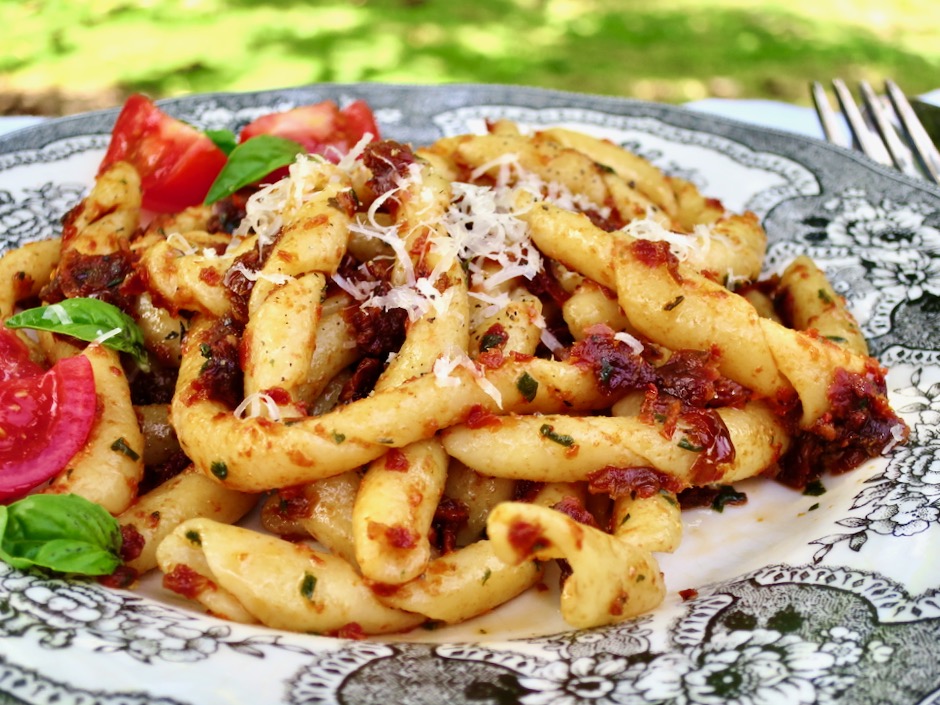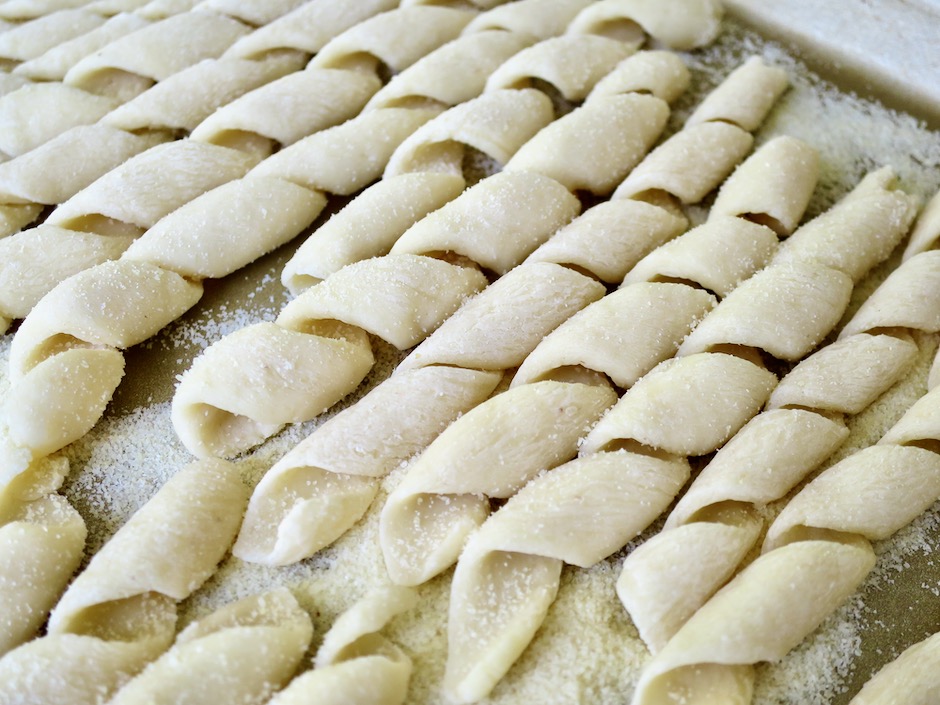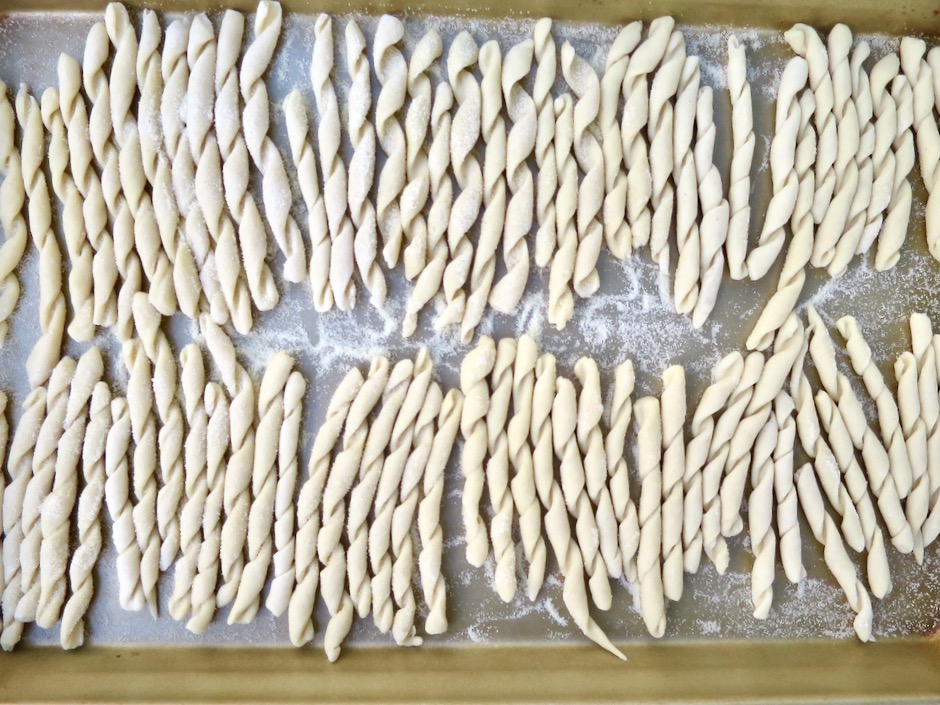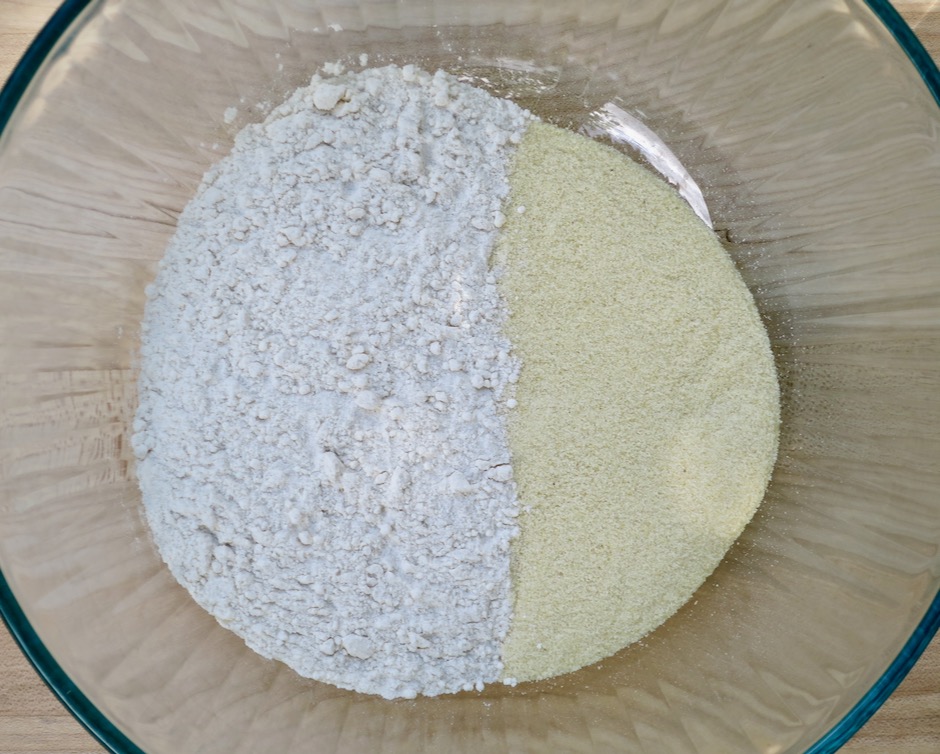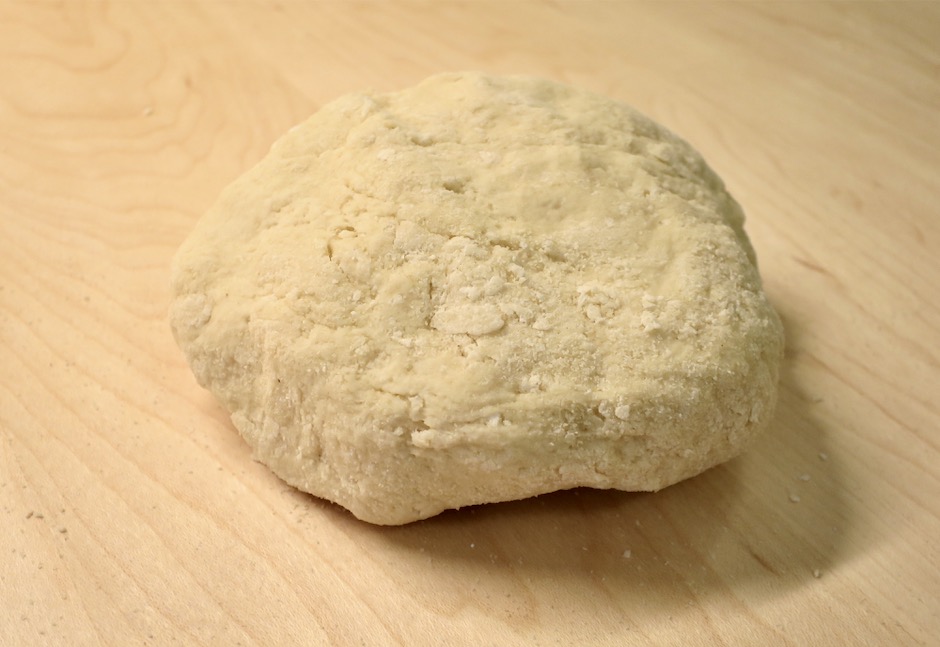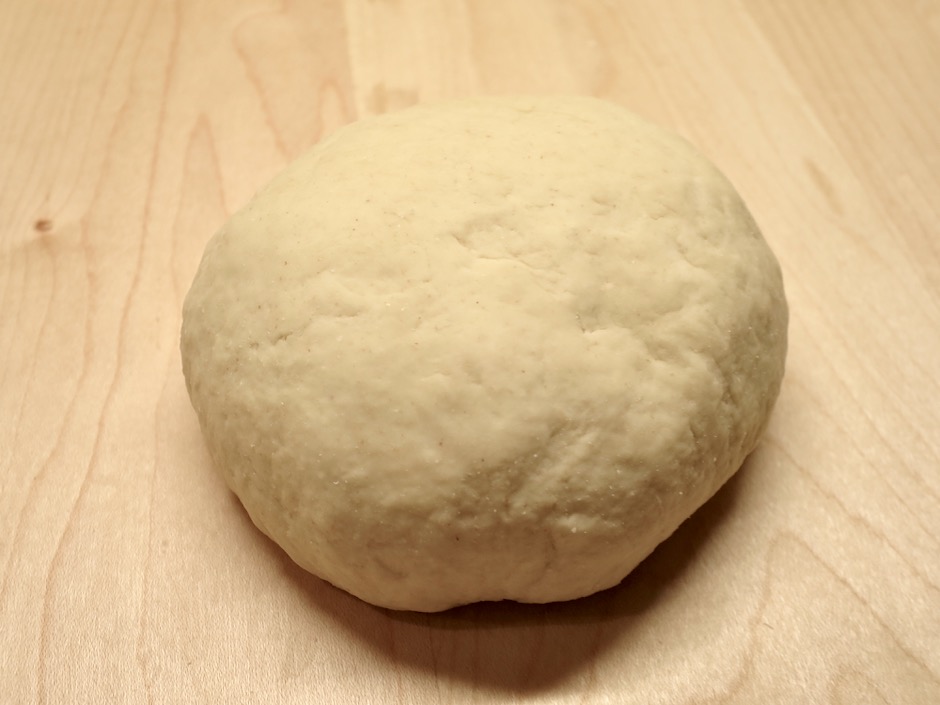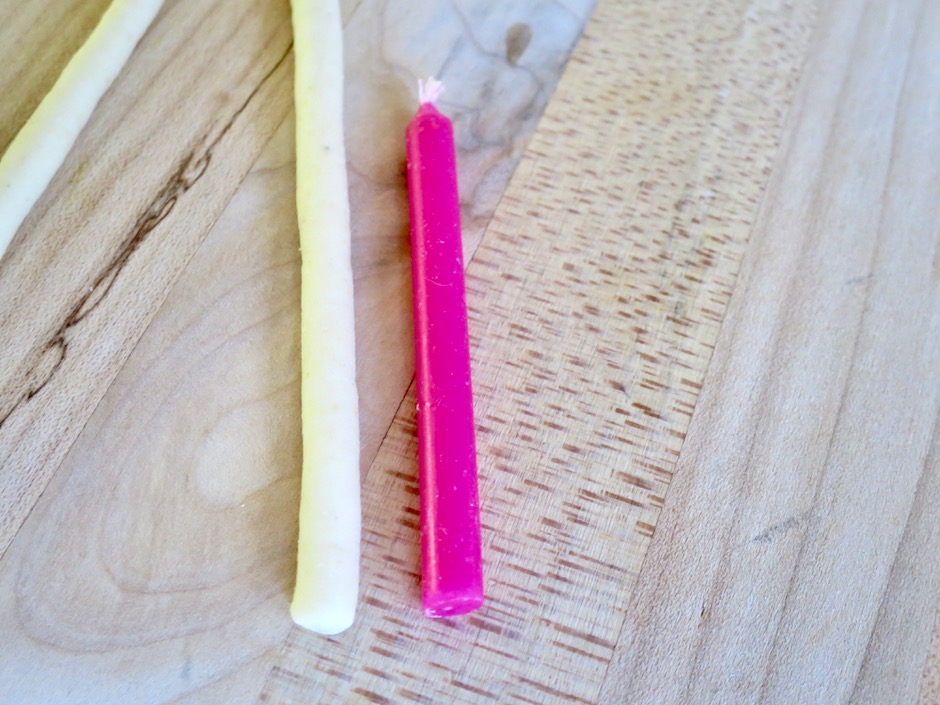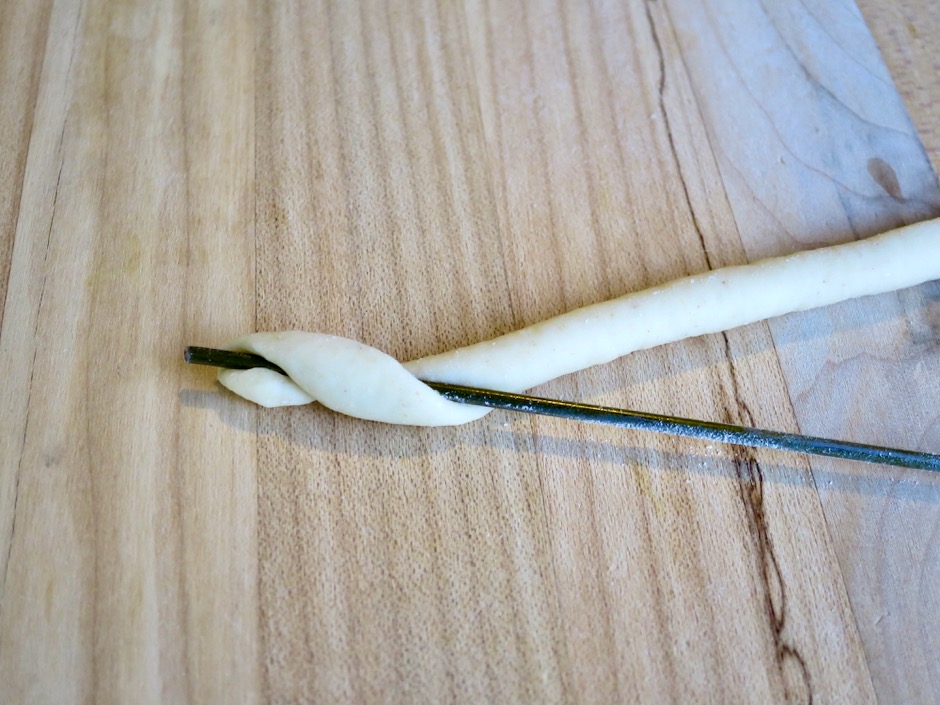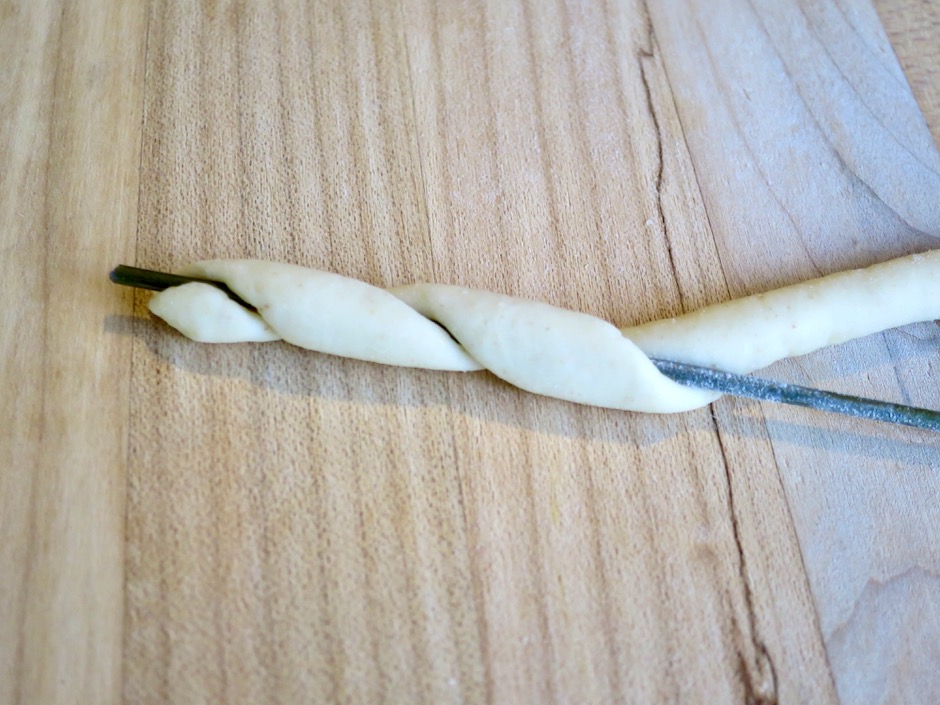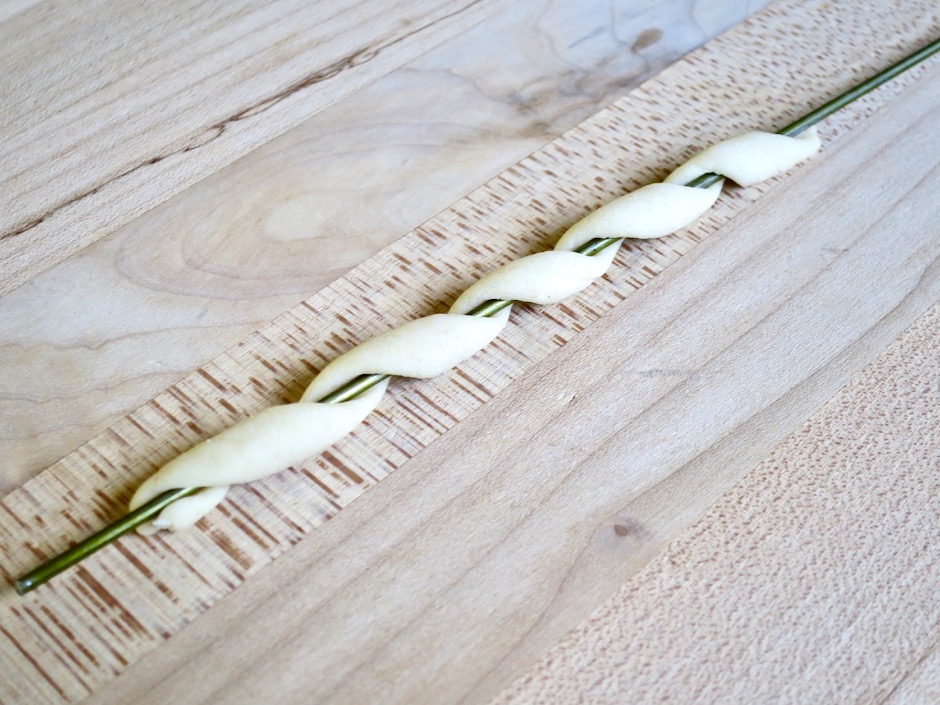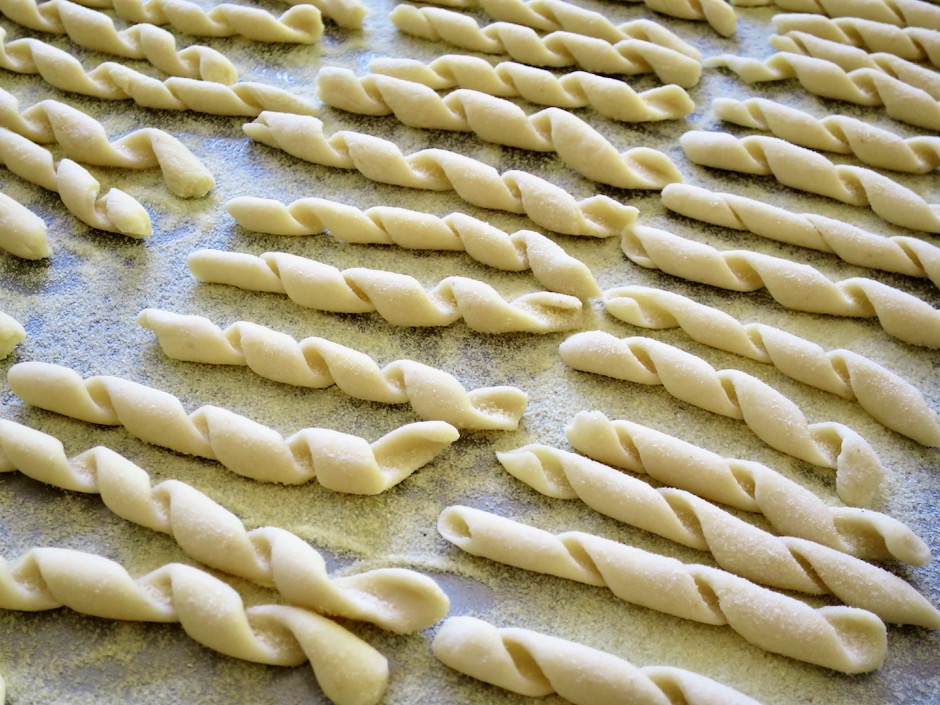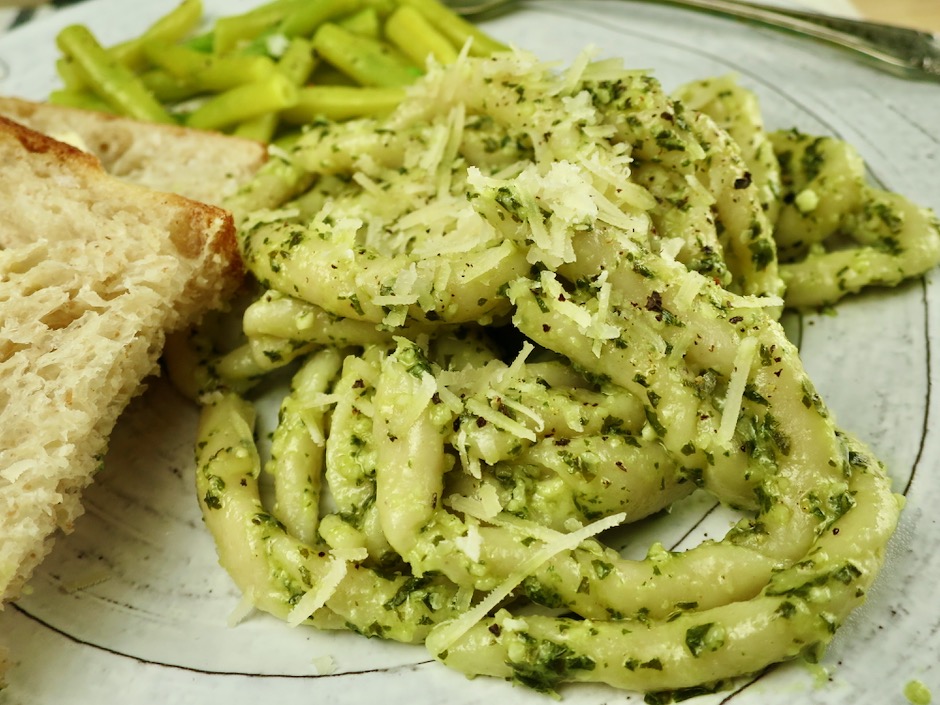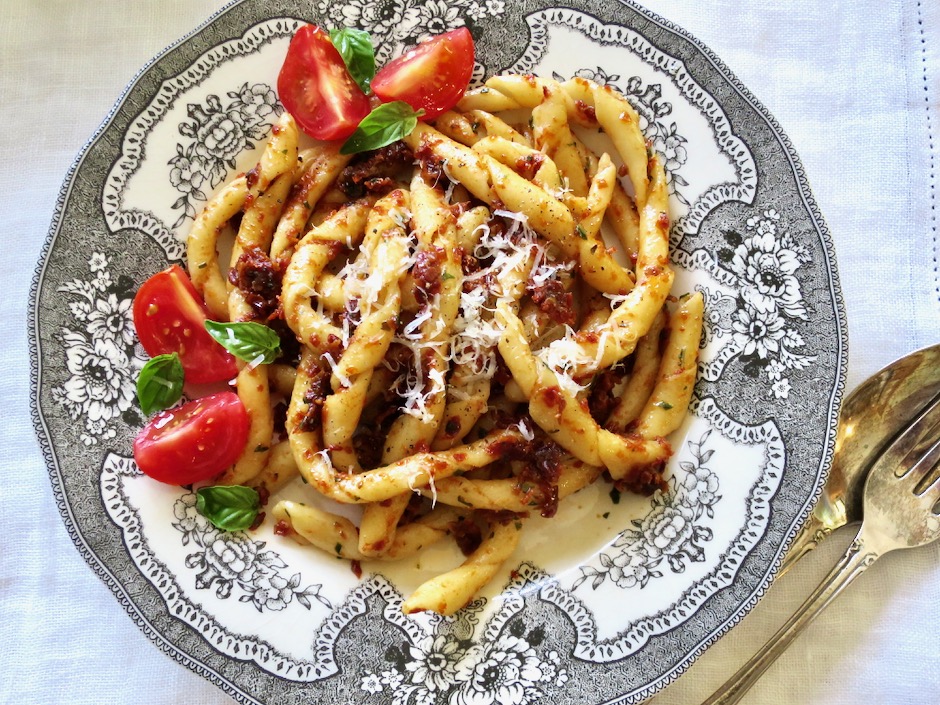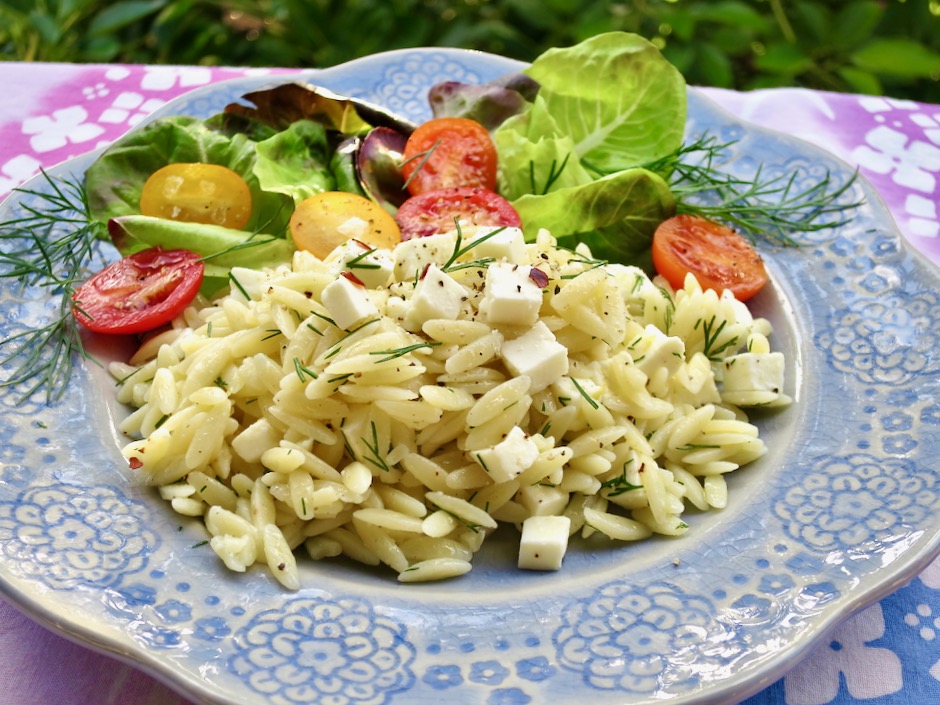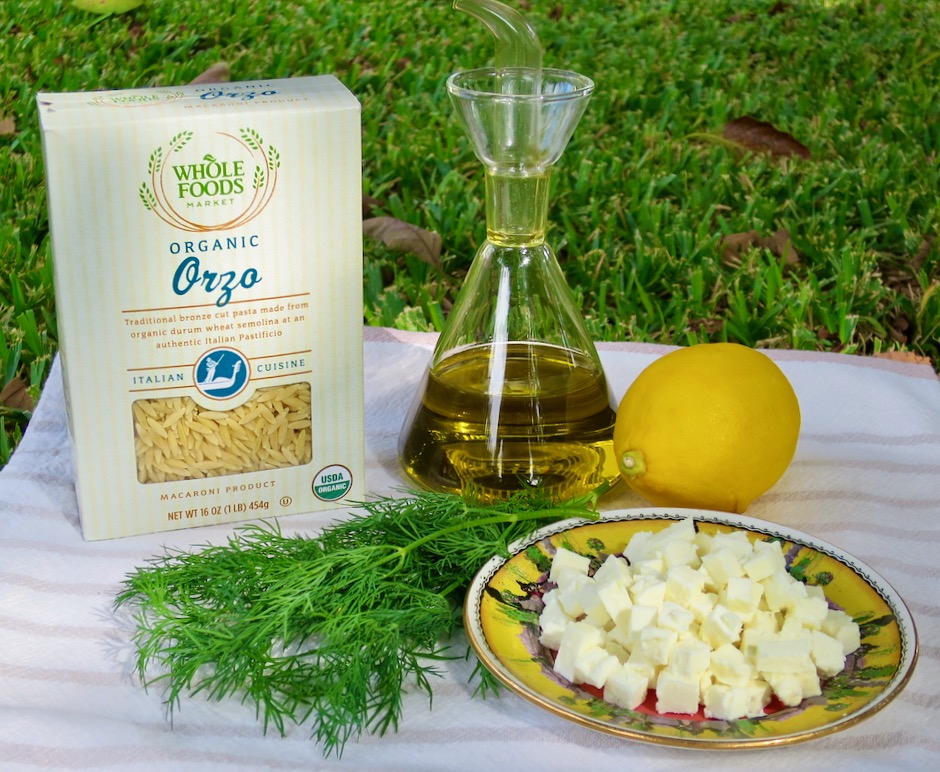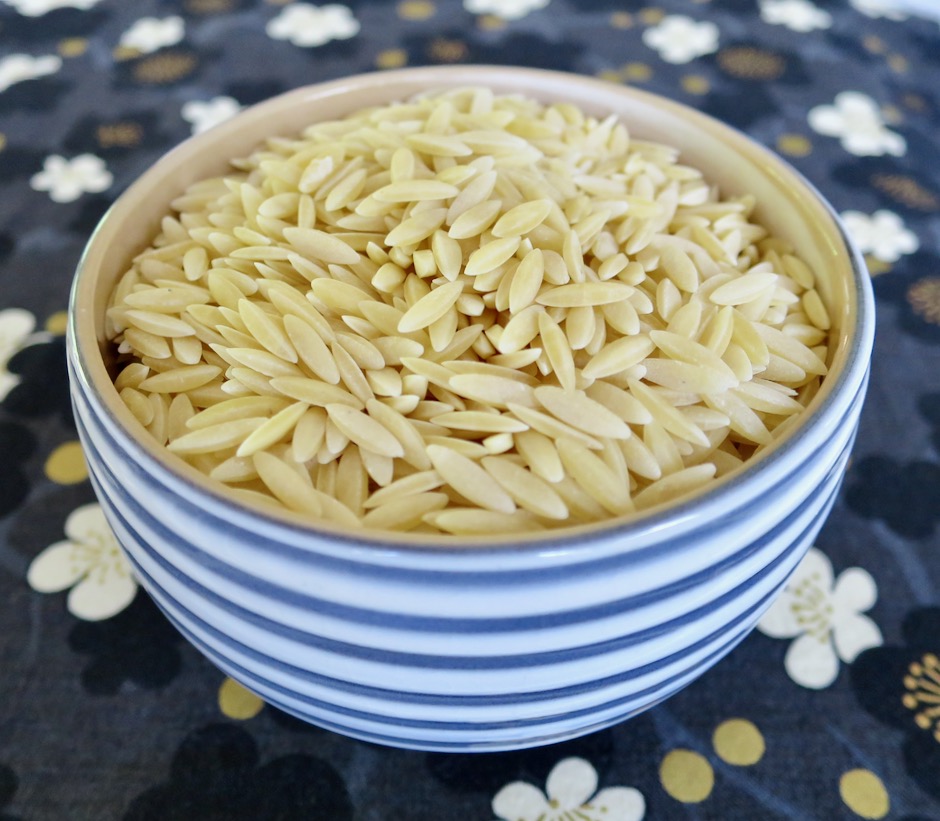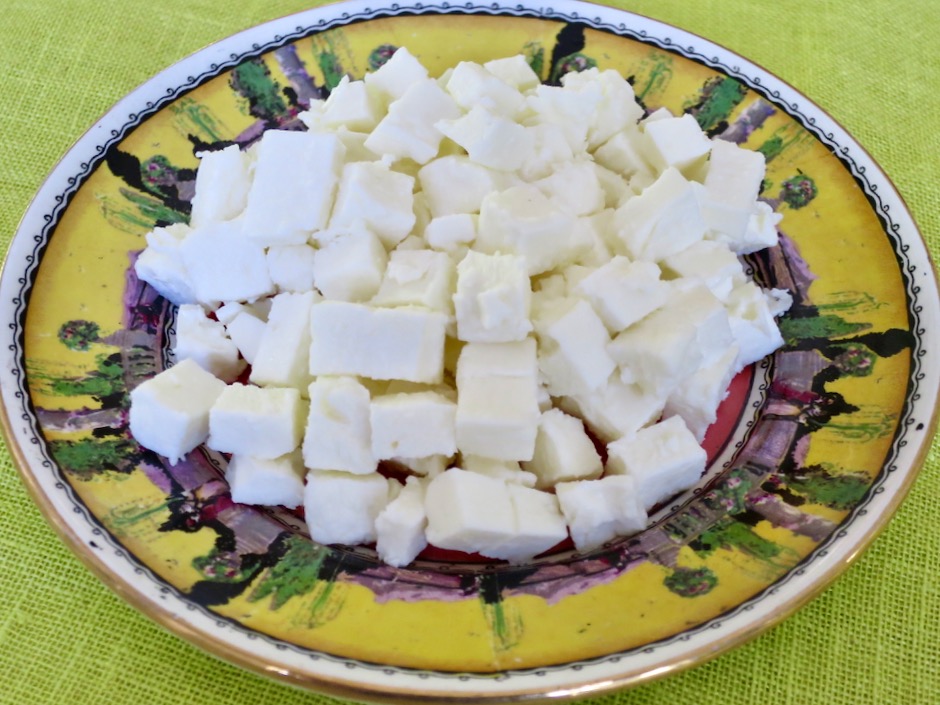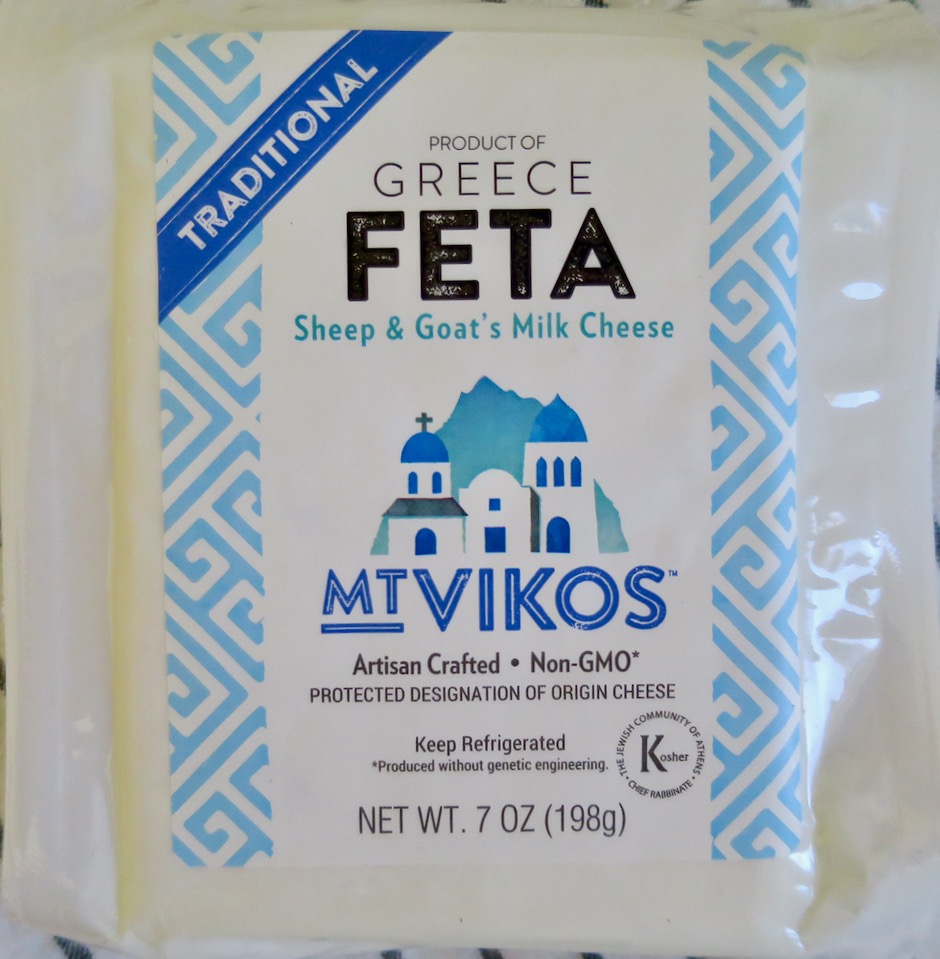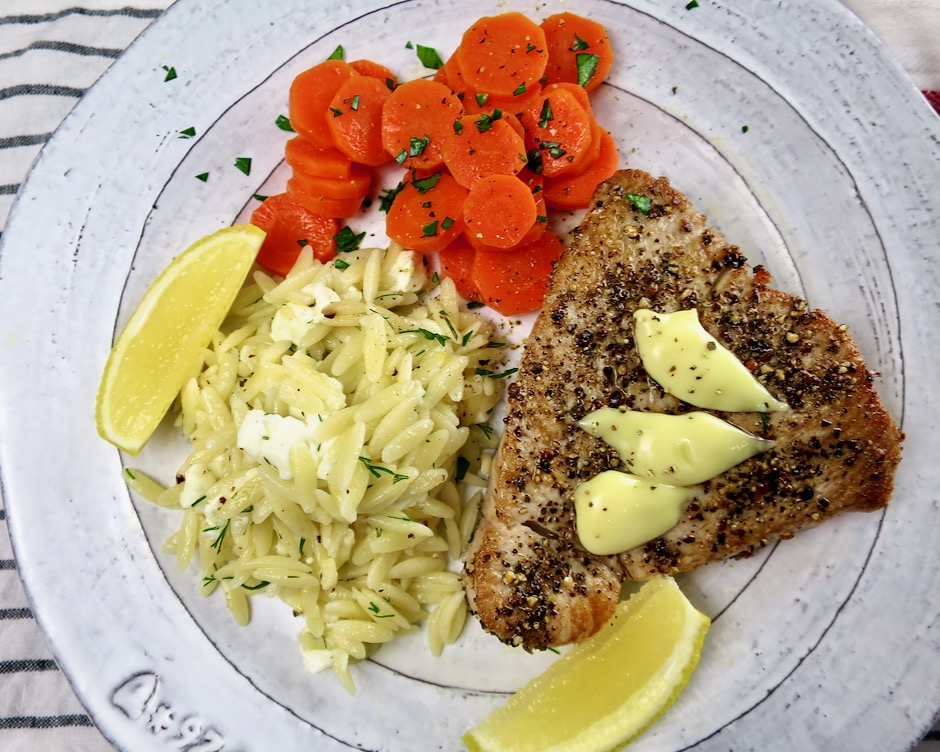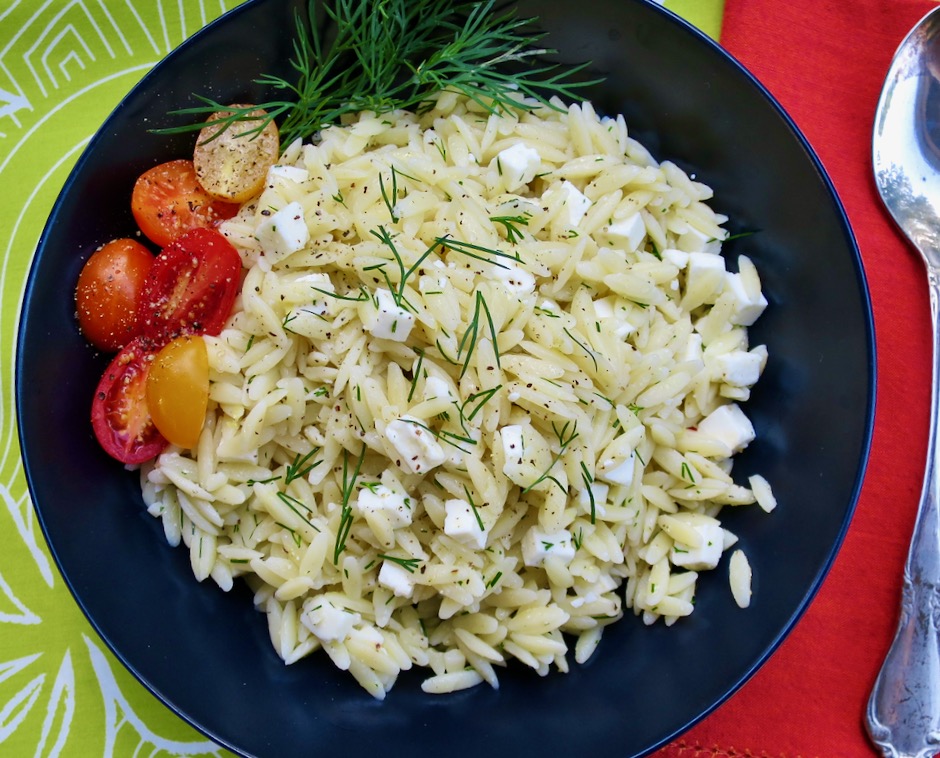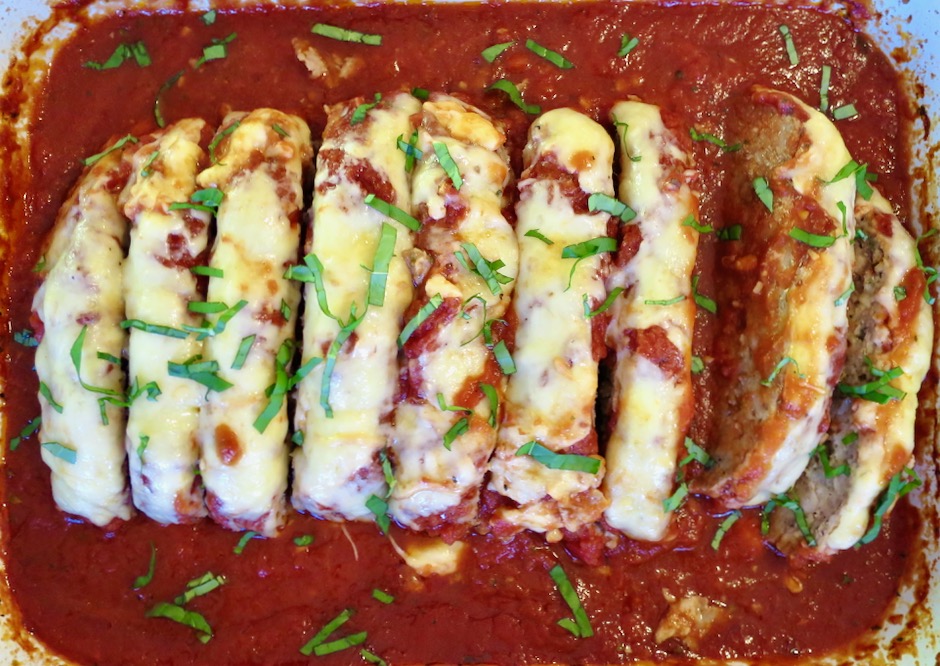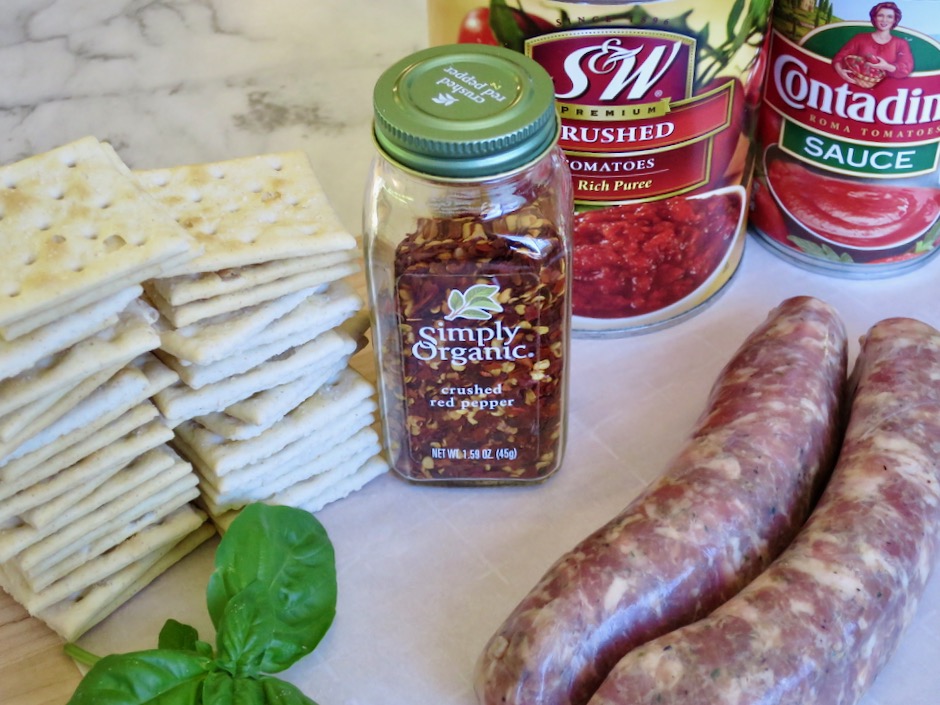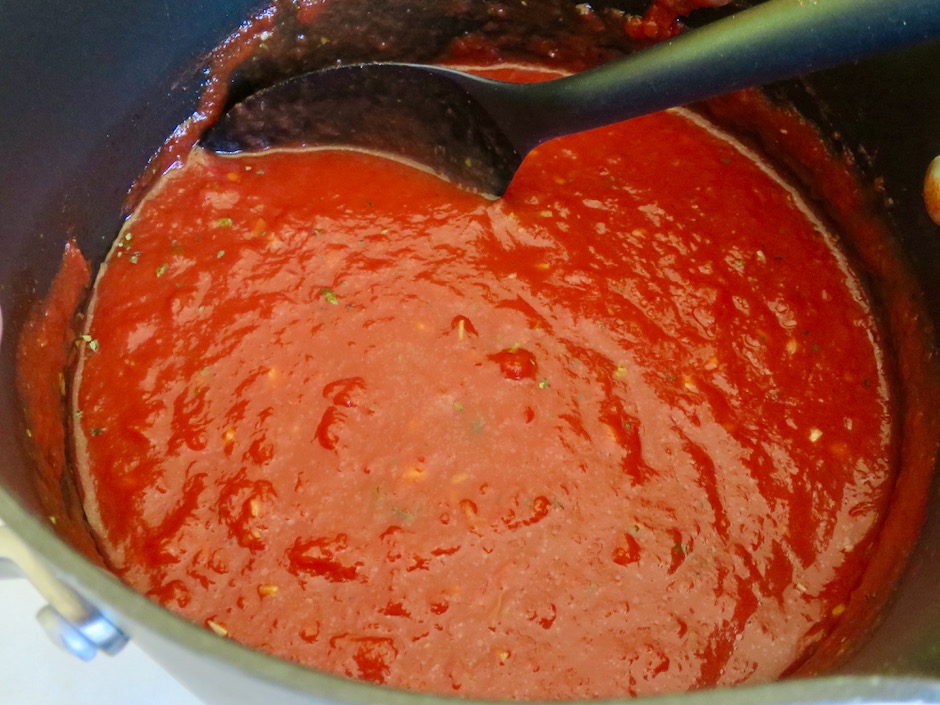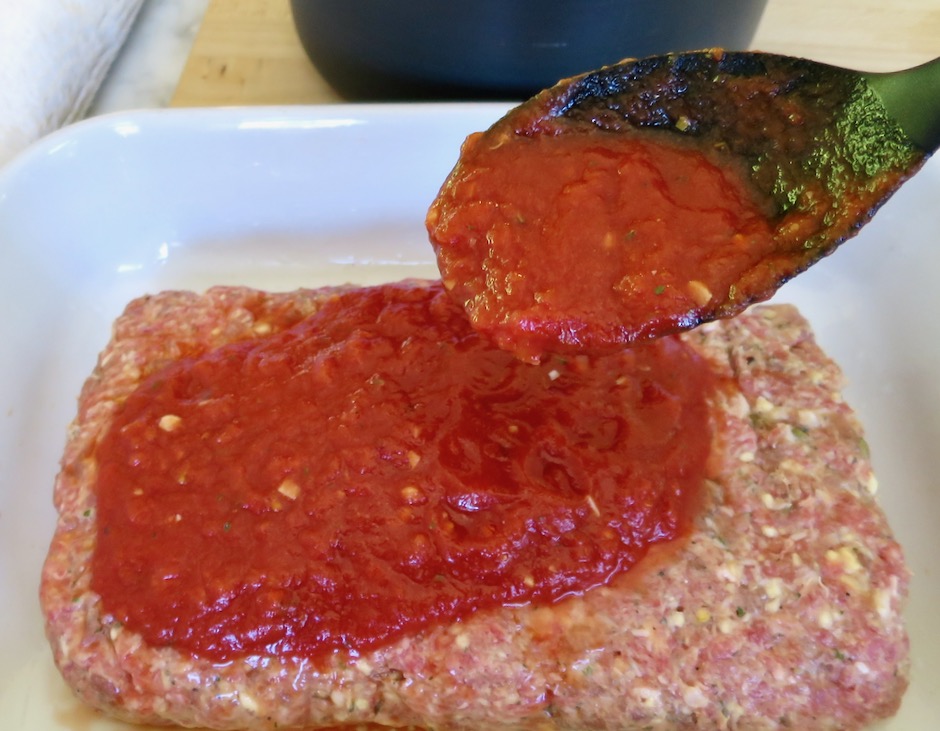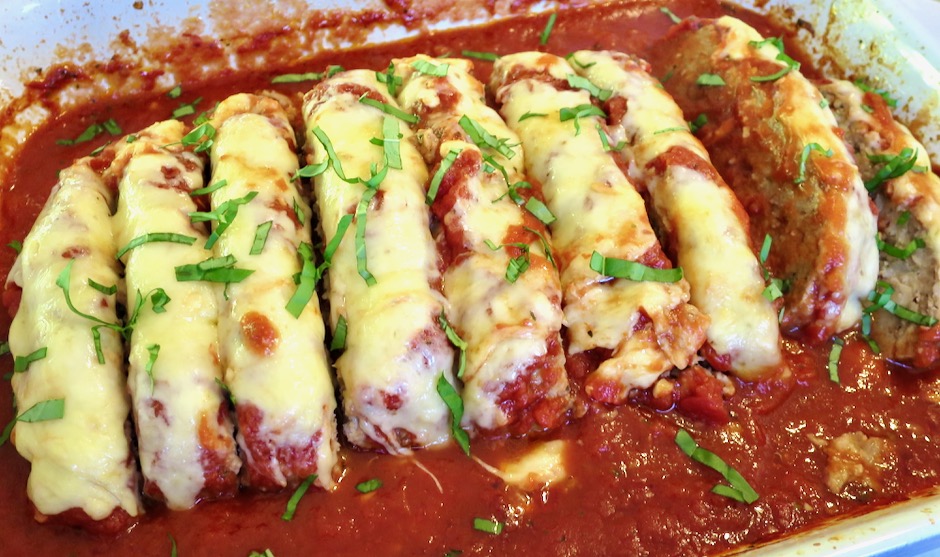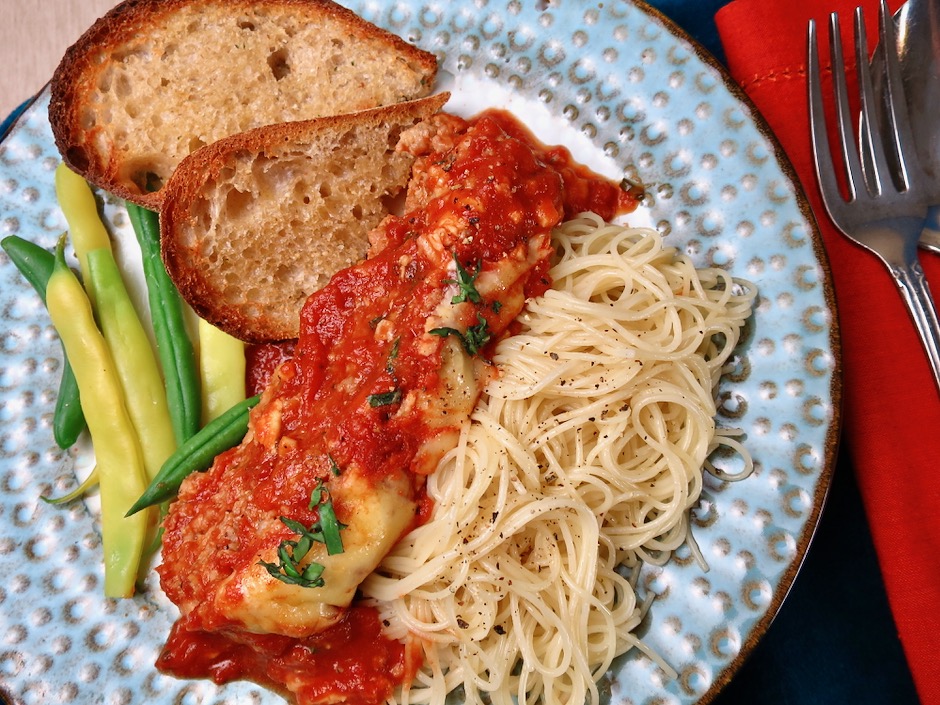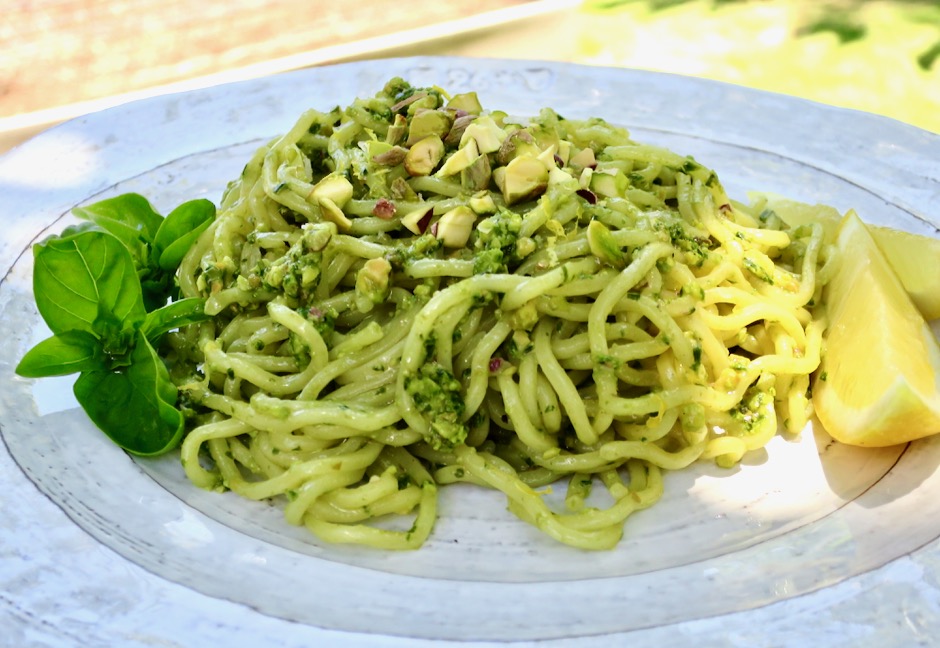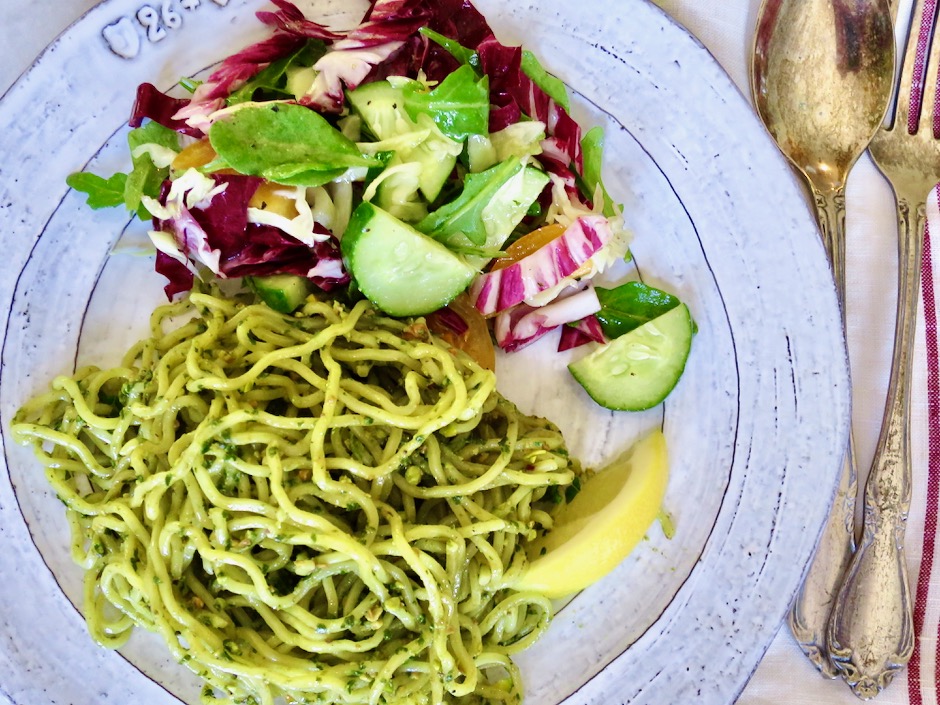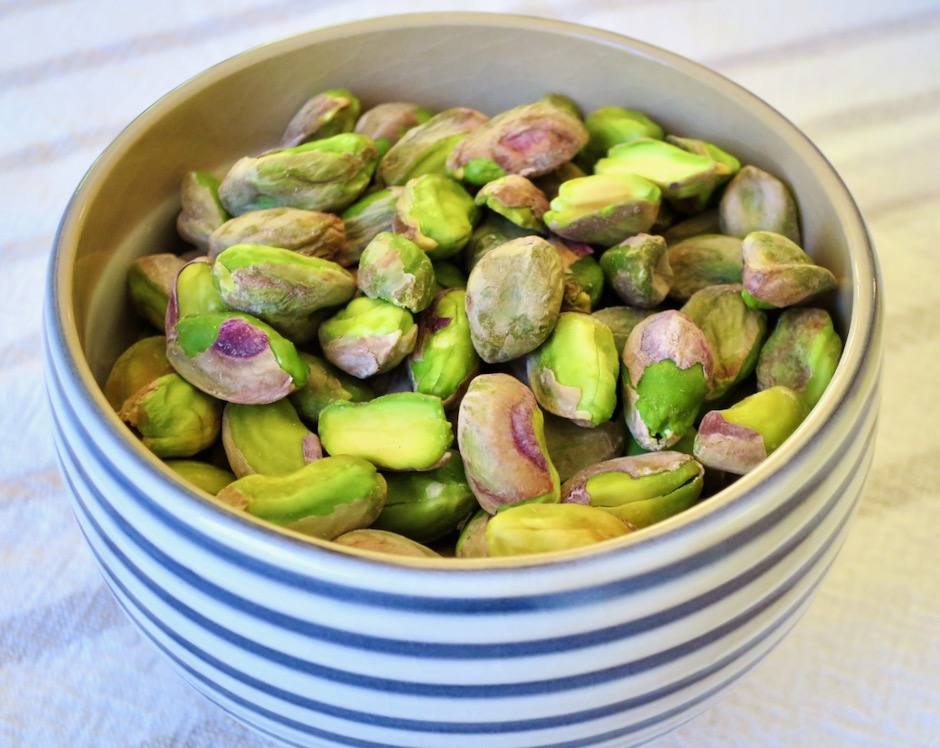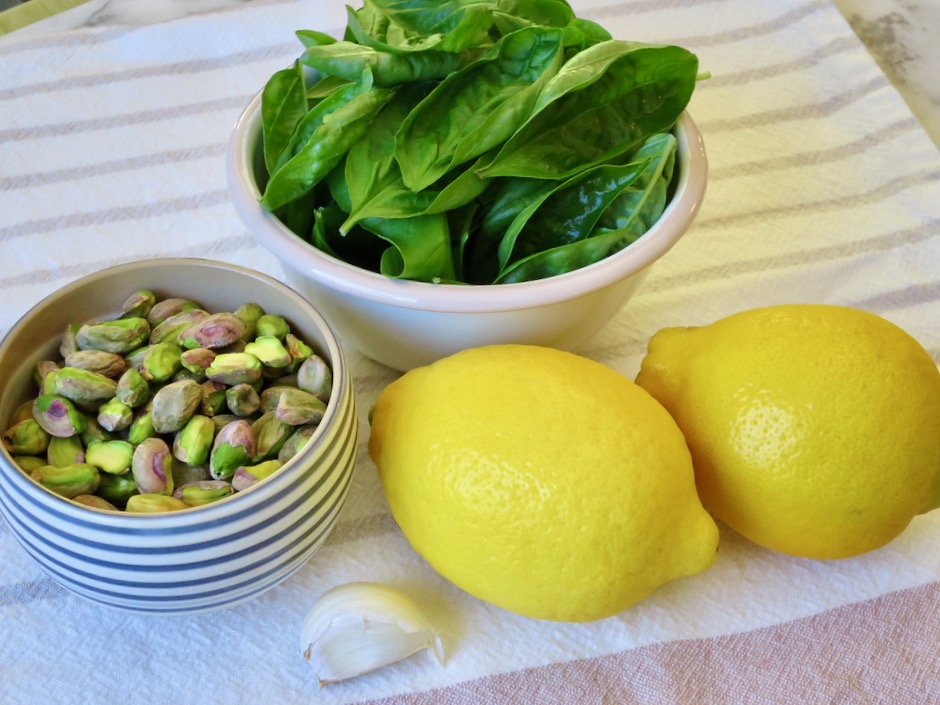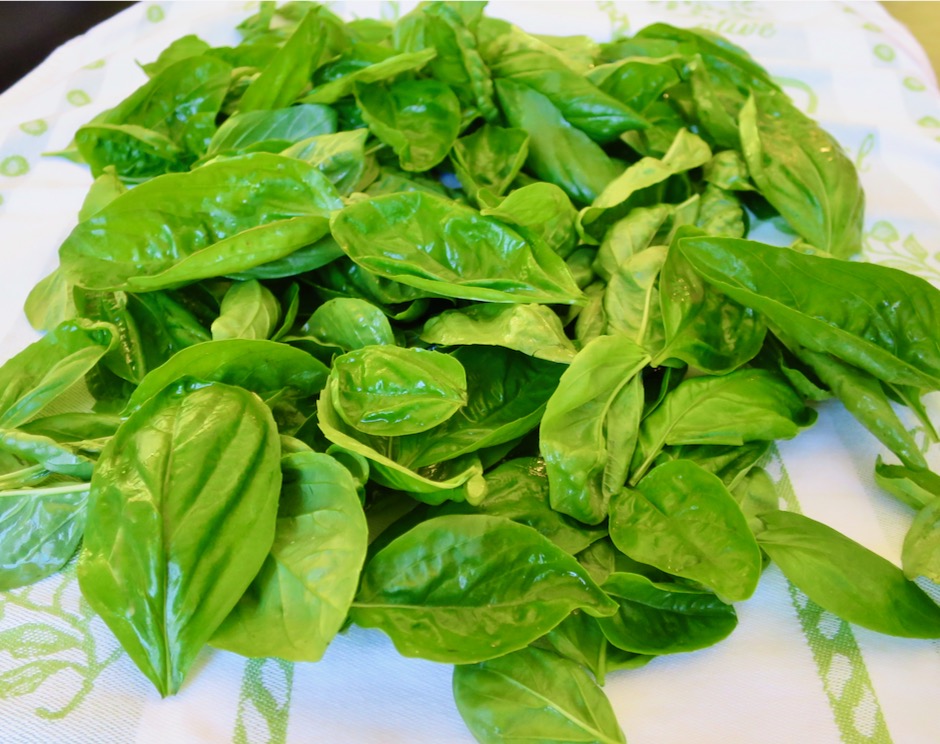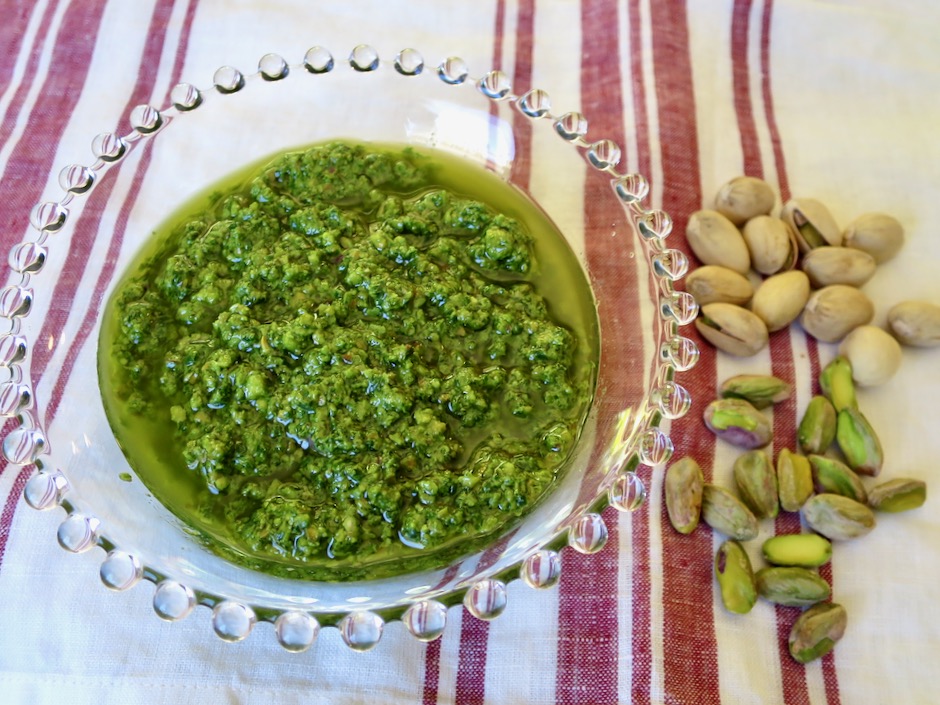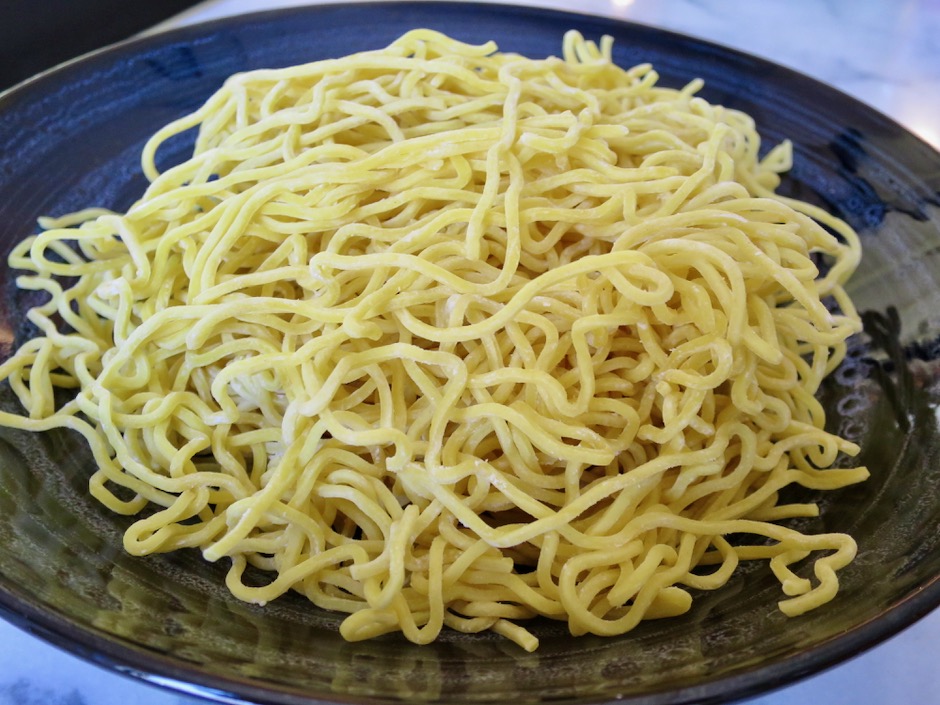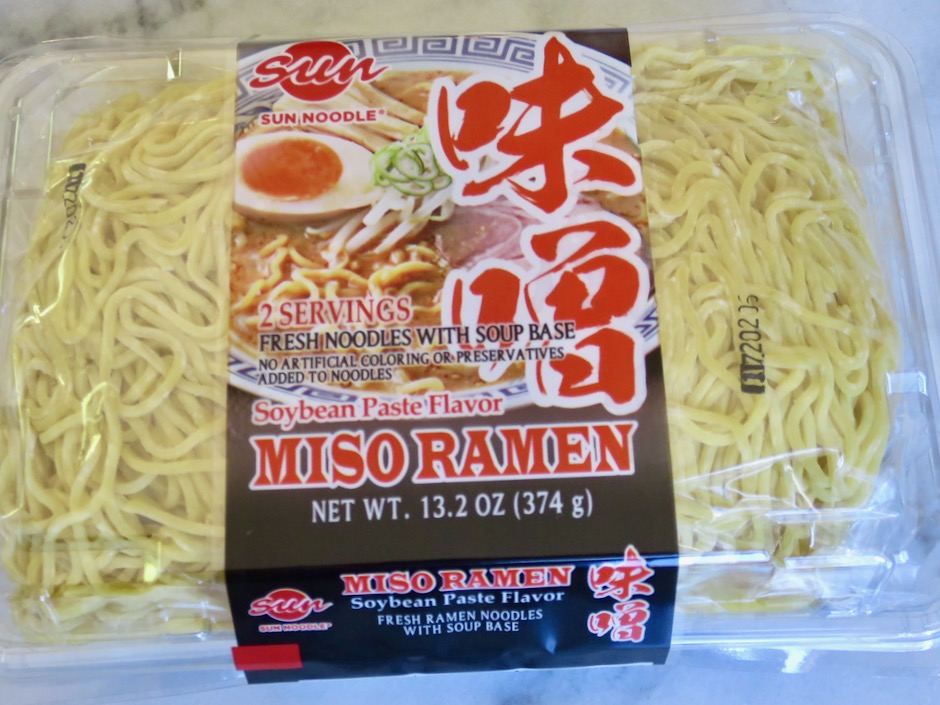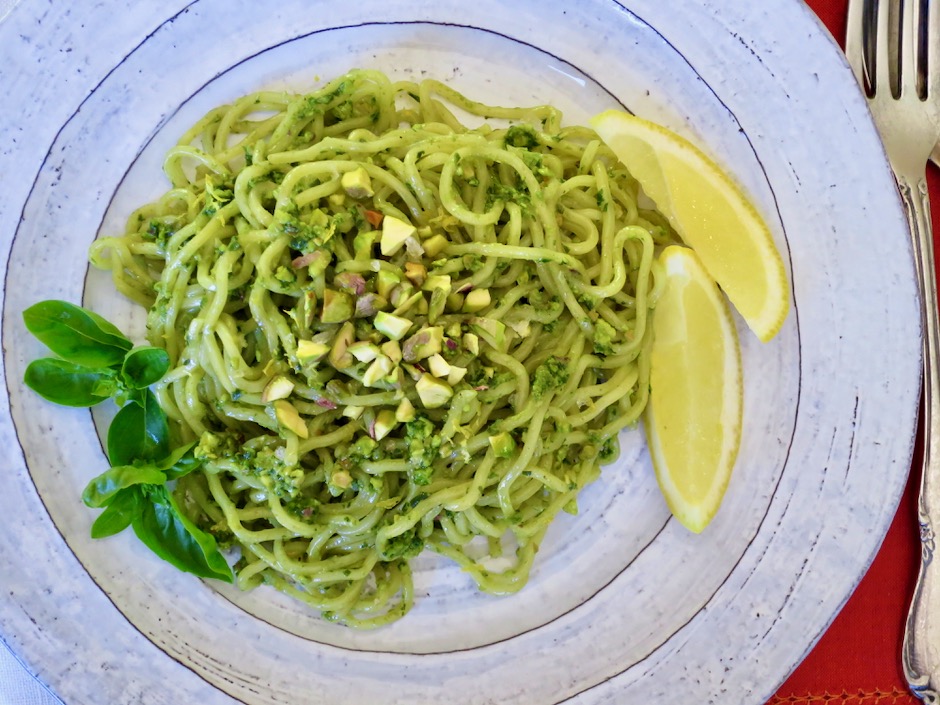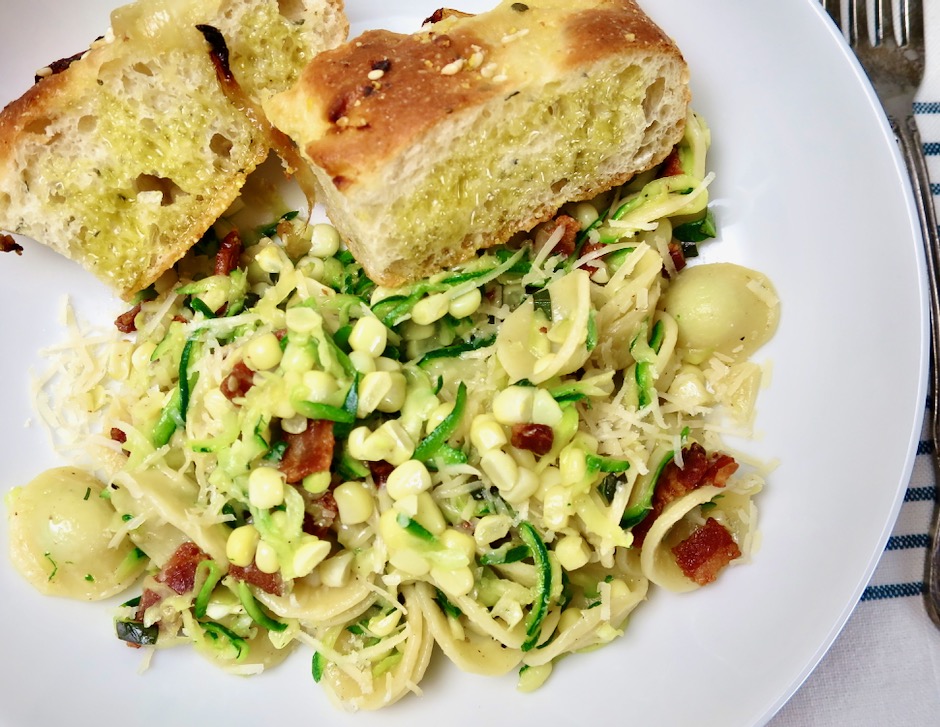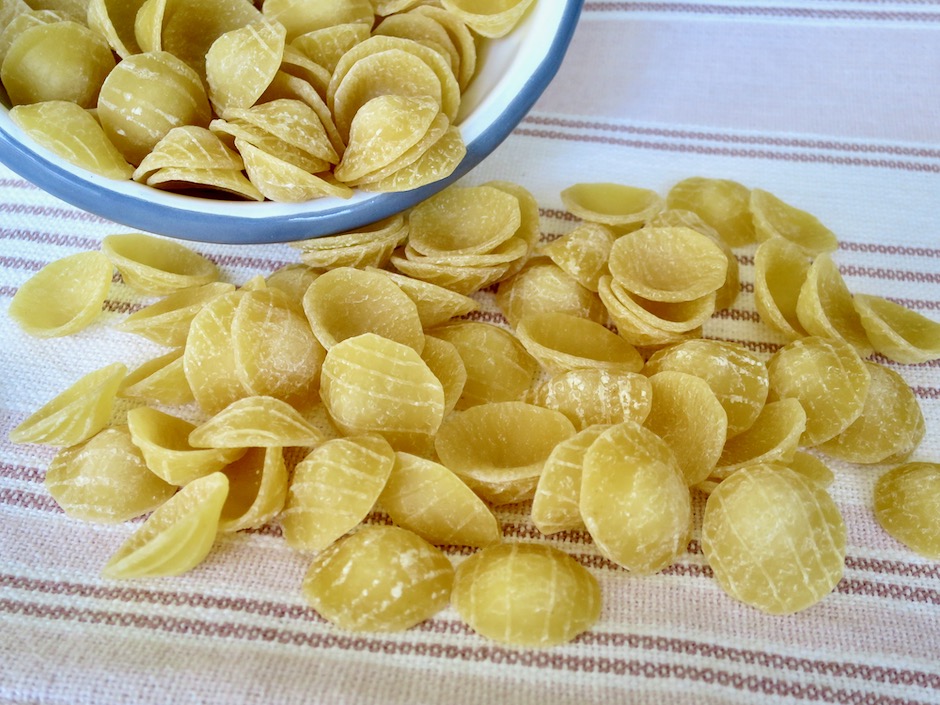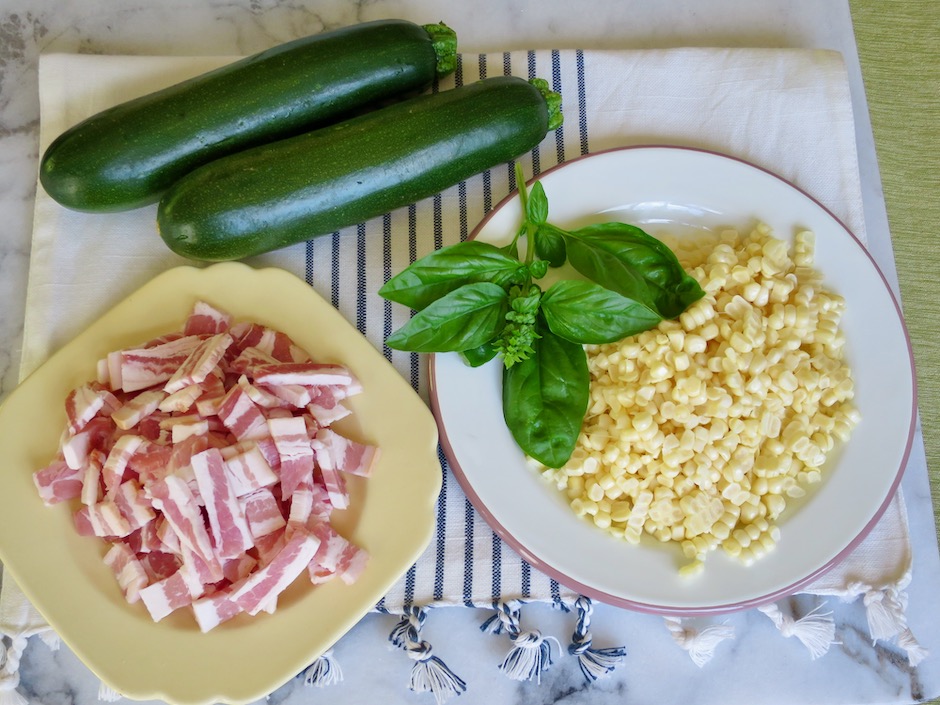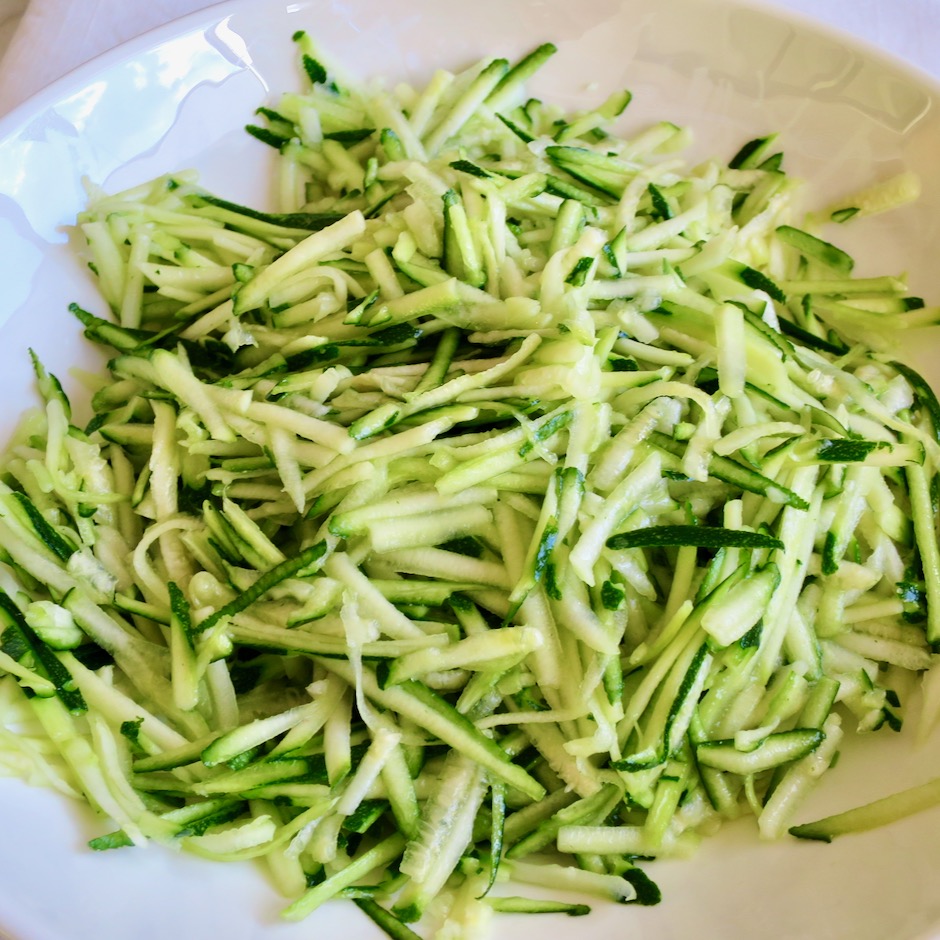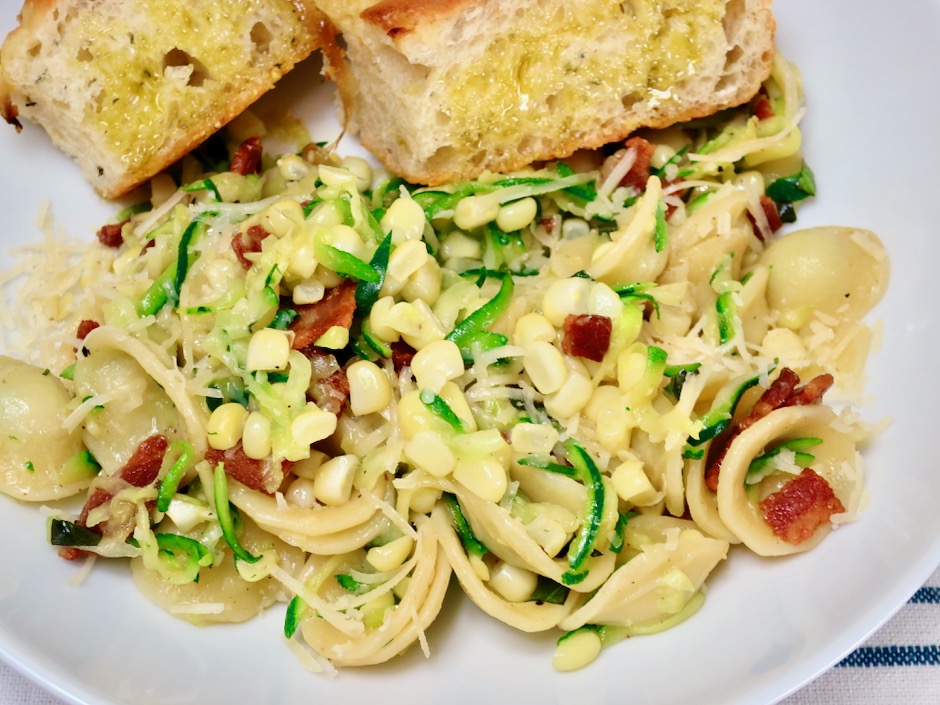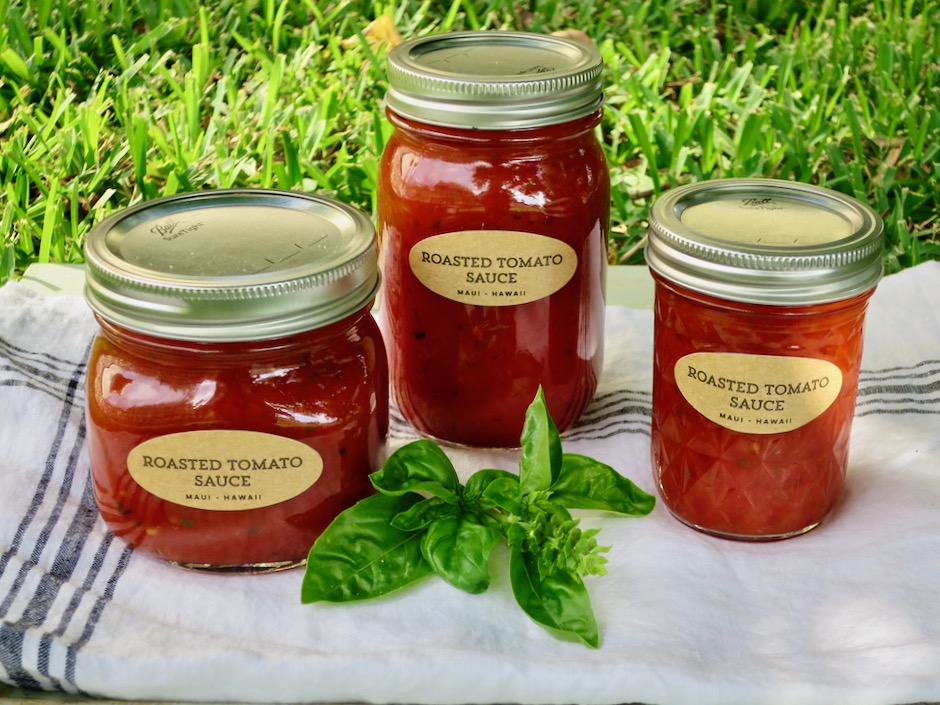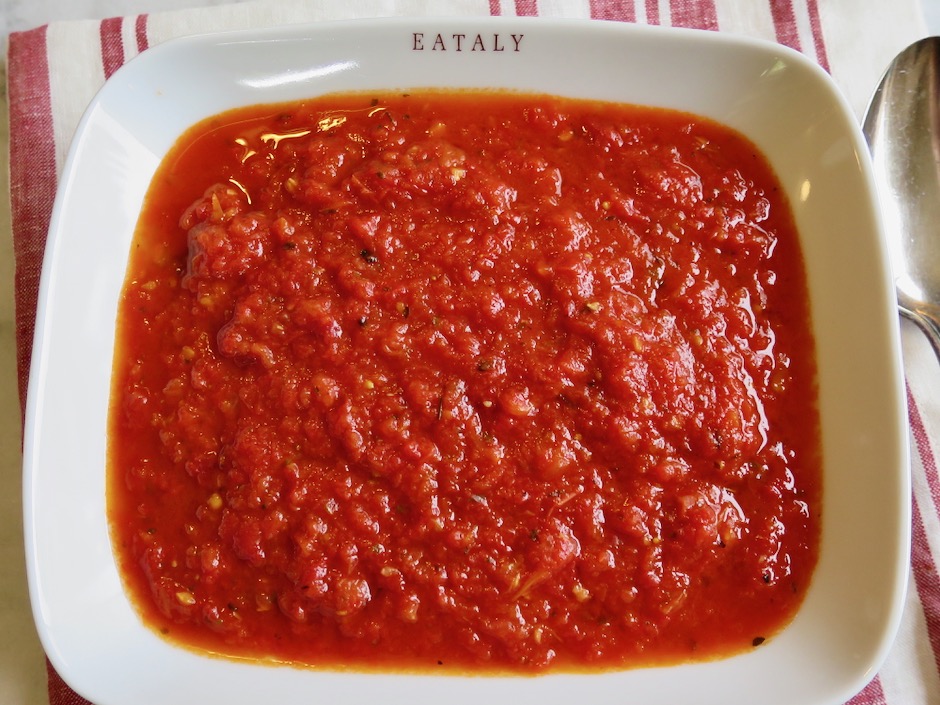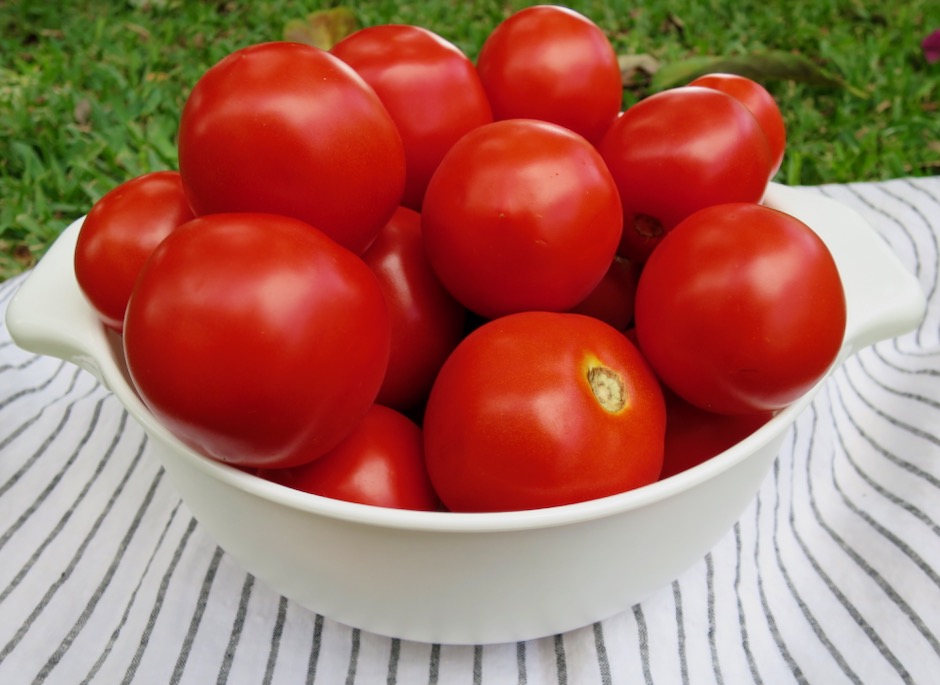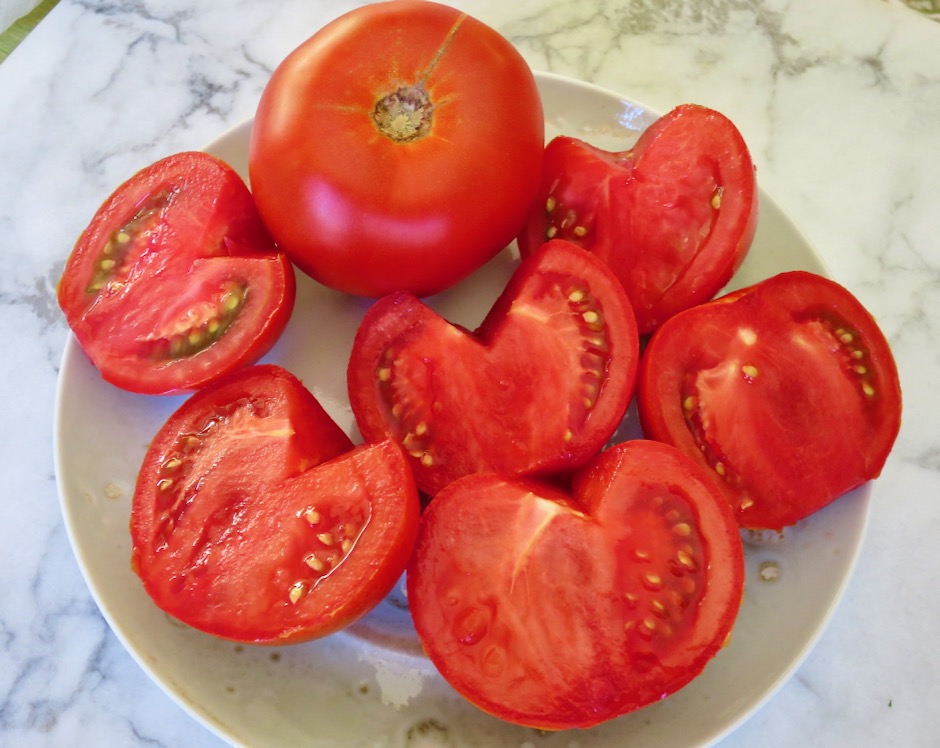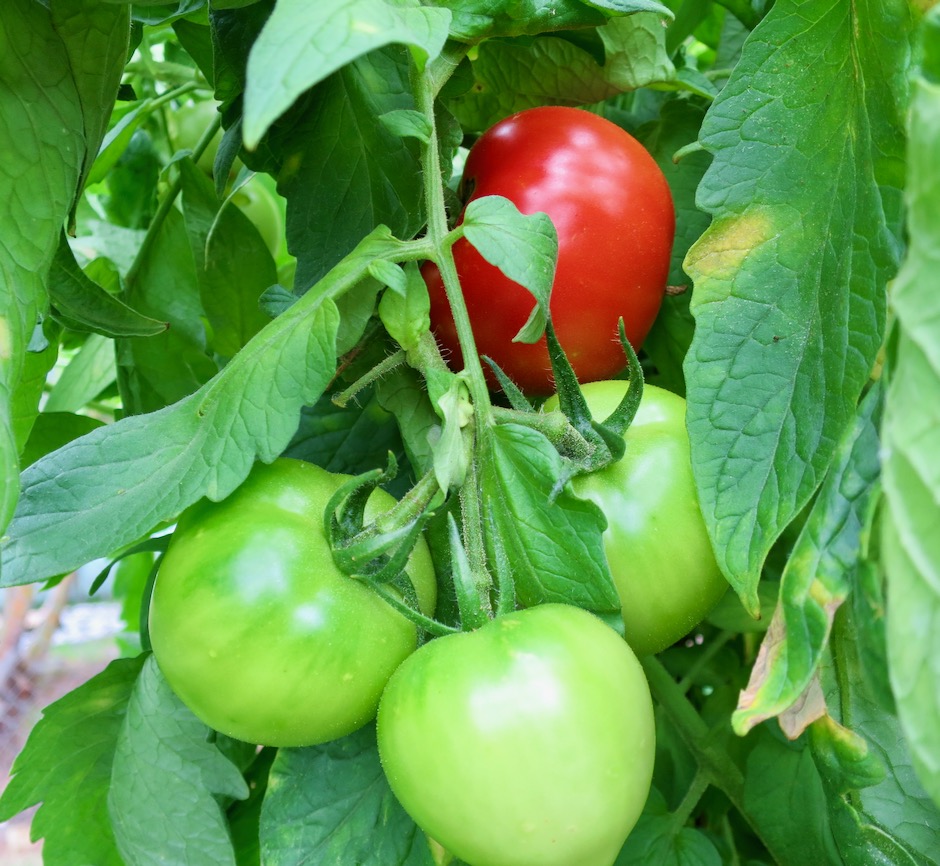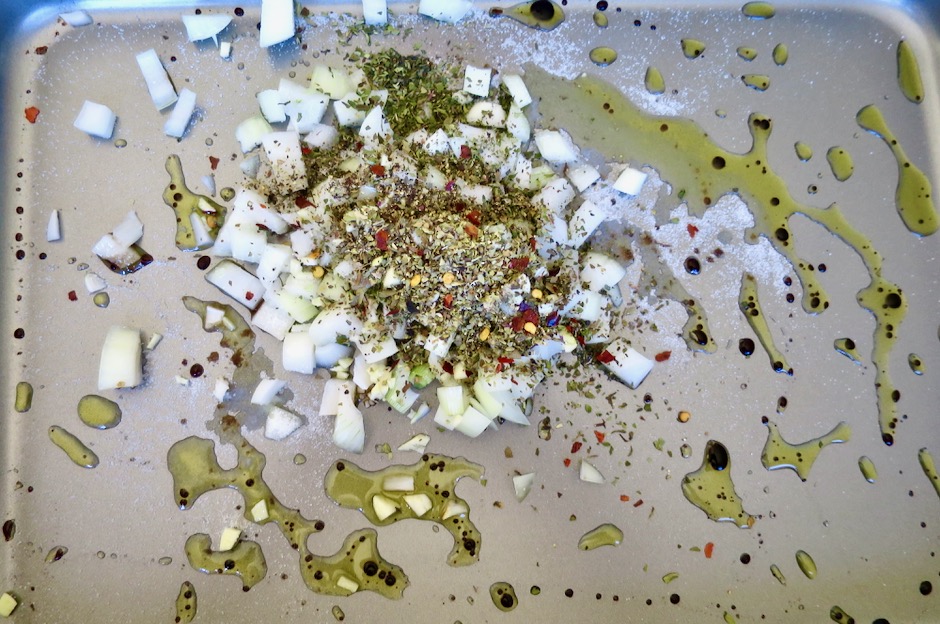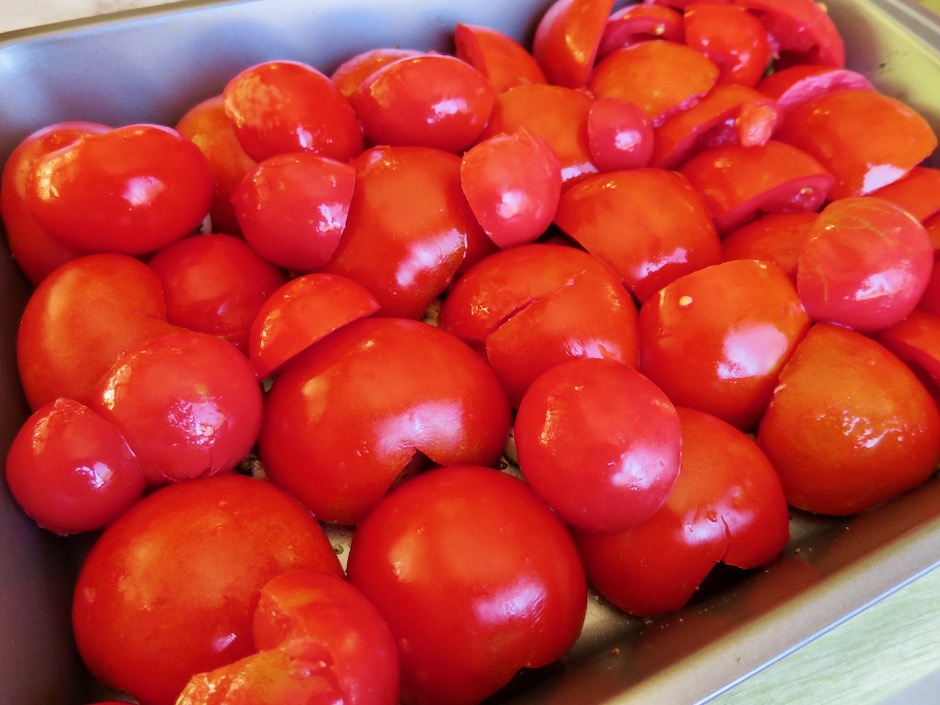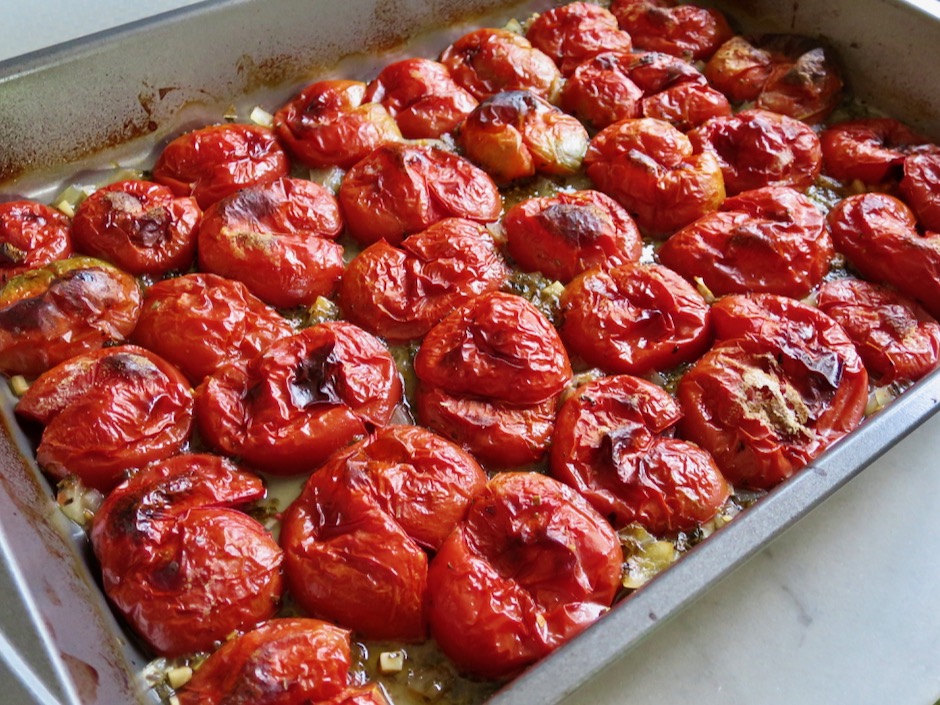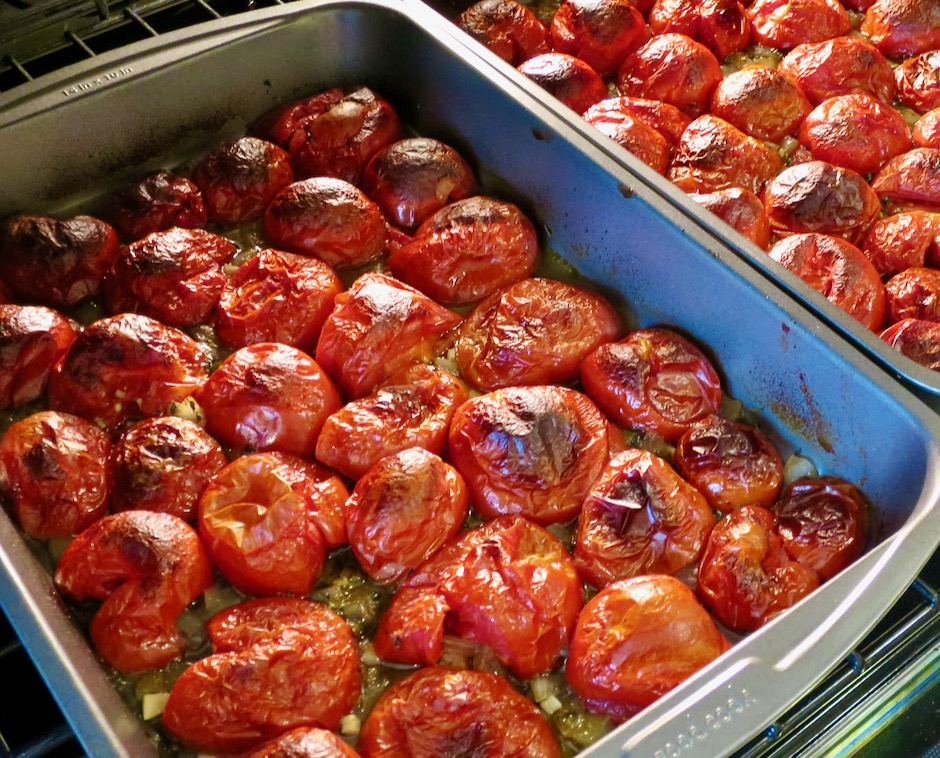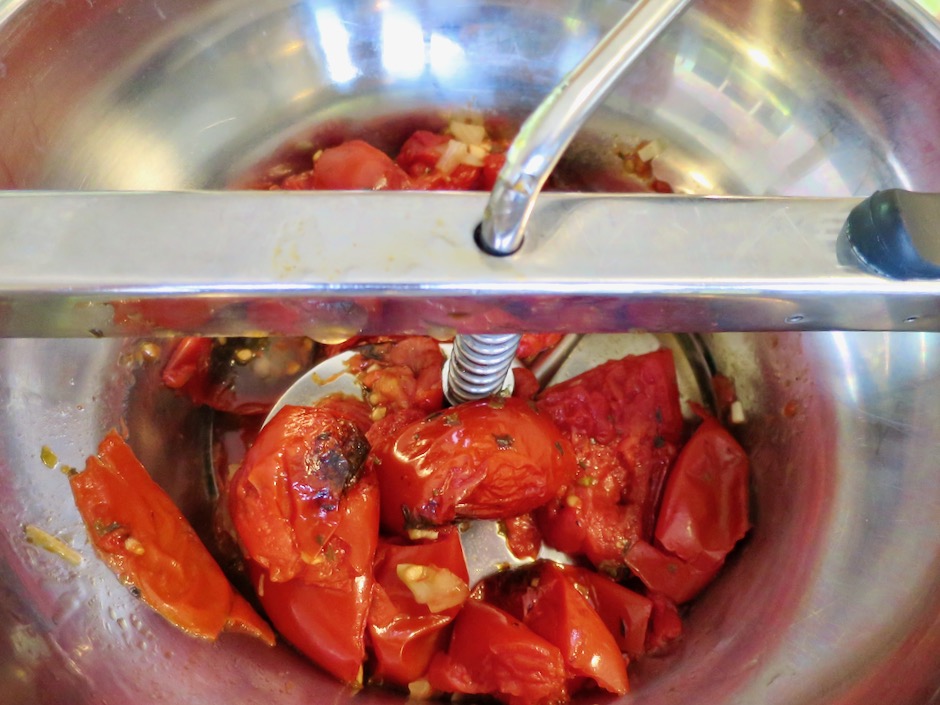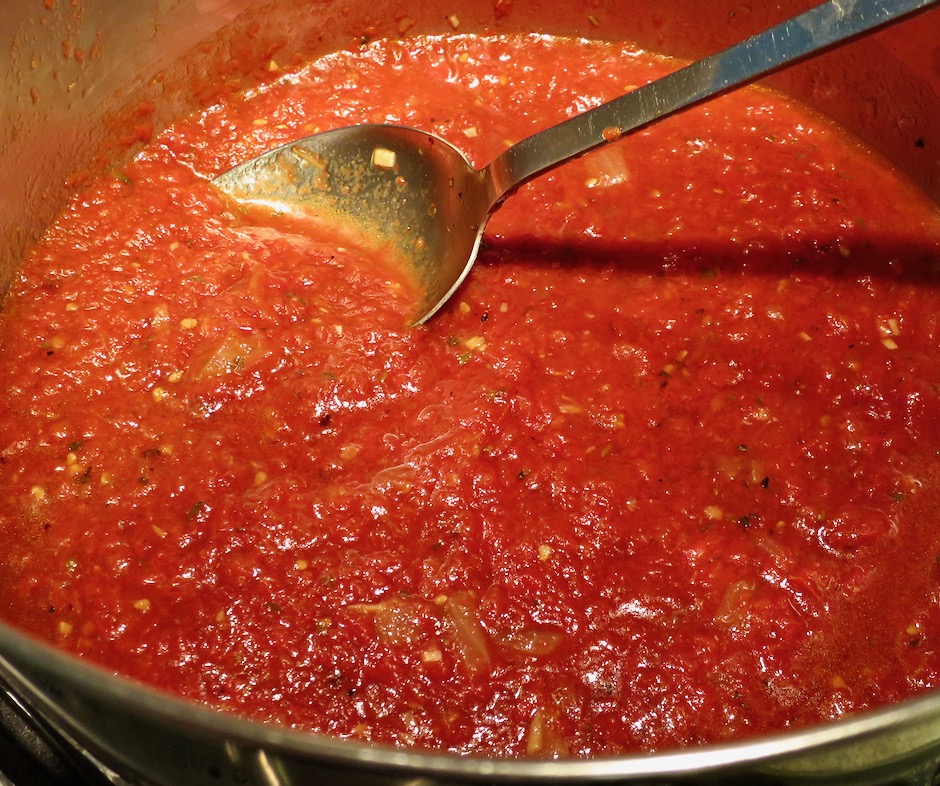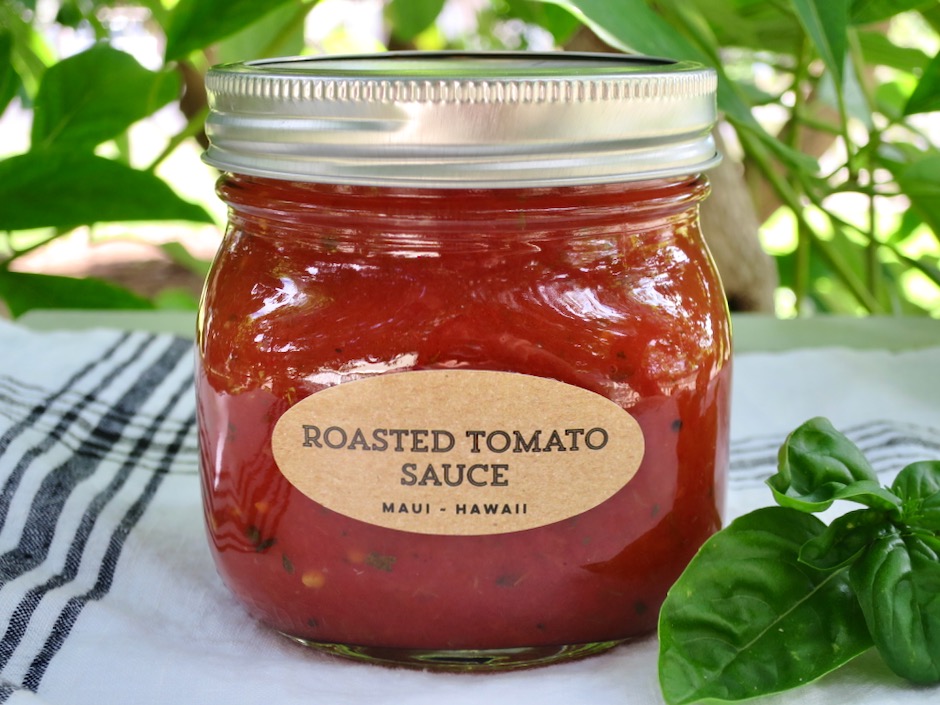Busiate comes from Trapani, located on the west coast of Sicily. The name is derived from buso, a Mediterranean grass, the stem of which was used to shape this spiraled pasta. Today’s home cooks rely more on modern metal tools such as a ferretto. Not having a ferretto, I used a thin wire cut from a metal hanger. I have even used a thin, long, cake pop stick that worked fine. It produced a thicker spiral but both are acceptable.
Most recipes call for semolina flour, water and salt. I tried this but found I preferred to use 00 flour with semolina. I used a recipe from Thomas McNaughton’s Flour + Water Pasta cookbook. Thomas is the Executive Chef and co-owner of the highly regarded Flour + Water restaurant in San Francisco. The 00 flour and semolina along with warm water and kosher salt proved to be the perfect combination for a toothsome yet tender pasta.
If you have a friend or family member available to help, it will shorten the time it takes you to shape the pasta. This is especially true if you are making pasta for more than two servings. On a lazy Sunday afternoon, I found that rolling and twisting the pasta dough was quite relaxing.
The dough will be very dry. You can spritz it with a bit of water but not too much. Once you knead the dough (about 10 minutes) it will become smoother and easier to handle.
After kneading the dough, it is covered with plastic wrap and set aside to rest for 30 minutes.
I made the ropes about the thickness of a standard birthday candle. The pasta ropes can tighten up a bit so another quick roll before shaping is recommended.
Here I use a metal wire (from a hanger) to shape the pasta into spiral shapes.
The ropes are twisted on the wire to form a spiral shaped pasta. It may seem a bit tricky, but after a few attempts you will master the technique. Because it is handmade, each piece will not be exactly uniform as is commercial dried pasta. It’s rustic and that makes it so charming.
Have a sheet pan sprinkled with semolina ready to hold your shaped pasta. Once I was done shaping the pasta, I covered the pan loosely with plastic wrap for about 3 hours until I was ready to cook it.
My favorite way to serve the busiate is with any type of pesto. The pesto clings to the nooks and crannies of the spiral pasta making this an ultra delicious meal.
- 180g (1 c) semolina flour
- 180g (1 c) 00 flour
- 178g salted warm water (3/4 cup made with 10g (1 tablespoon) kosher salt
- Special equipment: Metal wire for shaping the pasta
- Whisk together the semolina and 00 flour in a medium bowl. Add salted water, stirring with a wooden spoon or stiff spatula to combine ingredients. Place dough onto a clean workspace and knead the dough until smooth, about 10 minutes. You may lightly spritz the dough with water if it seems too dry. Form dough into a ball and cover with plastic wrap to rest for 30 minutes.
- Divide dough into 4 pieces. Working with one piece at a time (keep rest of dough covered with plastic wrap), divide each piece into 4 more pieces. Roll each piece into a long, thin rope, about 20-inches long. Cut the rope into four even pieces. Give each piece of rope a quick roll if it springs back a bit before shaping to ensure it measures about 5-inches. Using your thumb and index finger, gently pinch one end of the pasta rope around the top of the wire. Use your other hand to roll the wire on your work surface around the dough, to form a corkscrew shape (not too tight). Gently roll the wire back and forth a few times before sliding the pasta off the wire. If you find the dough sticks to the wire, lightly dust the wire with flour before proceeding with the next piece. Place shaped pasta on semolina dusted sheet pan. Continue until you have used up the dough. Cover the pasta loosely with plastic wrap until you are ready to cook it (I left mine out for 3 hours).
- Bring a large pot of salted water to a boil. Add busiate and cook for about 4-5 minutes, until al dente. Drain and serve with your favorite sauce. Pesto is ideal.

